All products featured are independently chosen by us. However, SoundGuys may receive a commission on orders placed through its retail links. See our ethics statement.
Best headphones
Published onApril 8, 2025


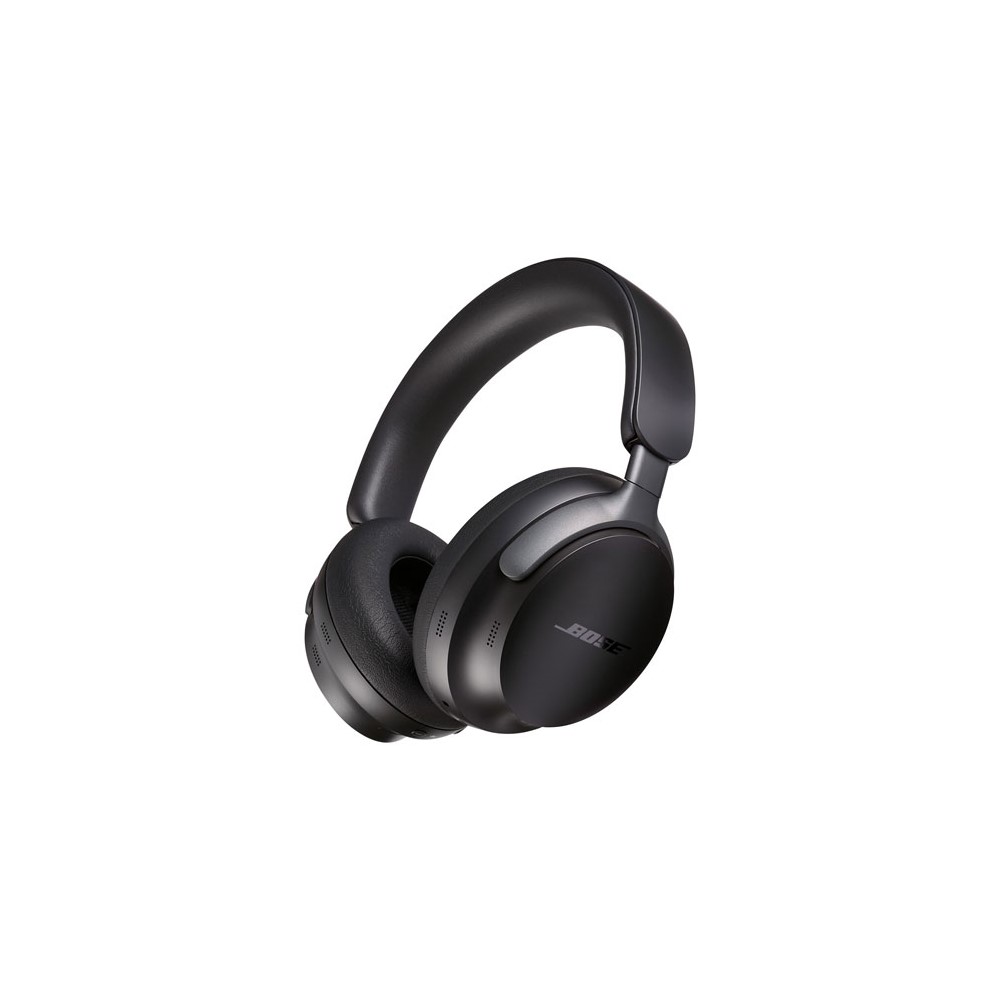






Headphones have become an essential part of our daily lives, offering a personal audio experience that can transform how we work, play, and relax. In 2024, the headphone market is more diverse than ever, with options ranging from cutting-edge wireless models to audiophile-grade wired designs. Whether you’re seeking immersive noise cancelation for travel, studio-quality sound for music production, or comfortable all-day wear for work, there’s a perfect pair of headphones out there for you. Our guide cuts through the noise to help you find the best headphones that match your lifestyle, preferences, and budget.
- April 8, 2025: We removed outdated options, added the Sennheiser HD 550 in the notable mentions.
- February 14, 2025: We added the Marshall Monitor III ANC as a notable mention, and removed the outdated Bose QuietComfort 45 and Bose Noise Cancelling Headphones 700.
- February 5, 2025: We added new notable mentions and ensured the timeliness of the information within the article for the new year.
- October 3, 2024: We added the MW75 Neuro as a top pick on the list and adjusted some formatting.
- August 12, 2024: We added reasons to buy and not to buy each top pick, new top picks for different use cases, and more notable mentions.
- November 28, 2024: We retested the Bose QuietComfort Ultra and Apple AirPods Max with updated firmware, and posted the new results.
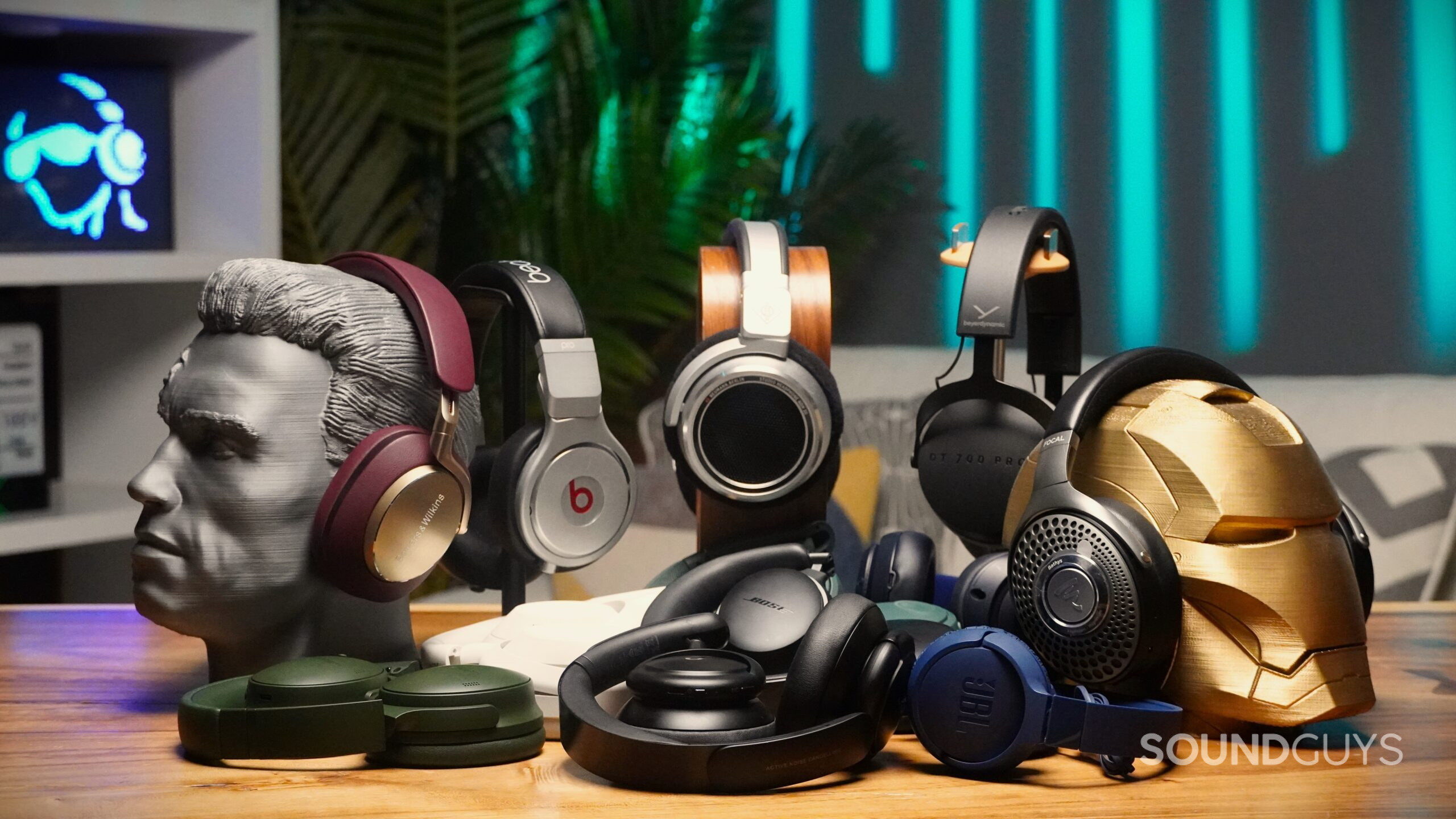
We’ve tested over 300 pairs of headphones in our lab, covering every category, from portable on-ears to open-back behemoths. Our top picks are backed by objective data gathered through standardized tests in controlled conditions. We measure frequency response and how well it aligns with our preference curve, evaluate noise attenuation capabilities, and conduct extensive battery life tests for wireless models. Additionally, we utilize the MDAQS algorithm to generate sound quality scores from a virtual panel of listeners, providing a consistent and unbiased assessment of audio performance. For models with microphones, we conduct tests in various simulated environments to ensure clear communication in any situation.
Why do we do all this? To cut through the noise and give you the information, you need to choose the best headphones for your needs. Our selection here covers the top picks in the most popular categories, but you can find plenty of best lists for specialized niches on our website as well.
Take SoundGuys’ quiz to find your best fit
Best wireless headphones for most people: Sony WH-1000XM5
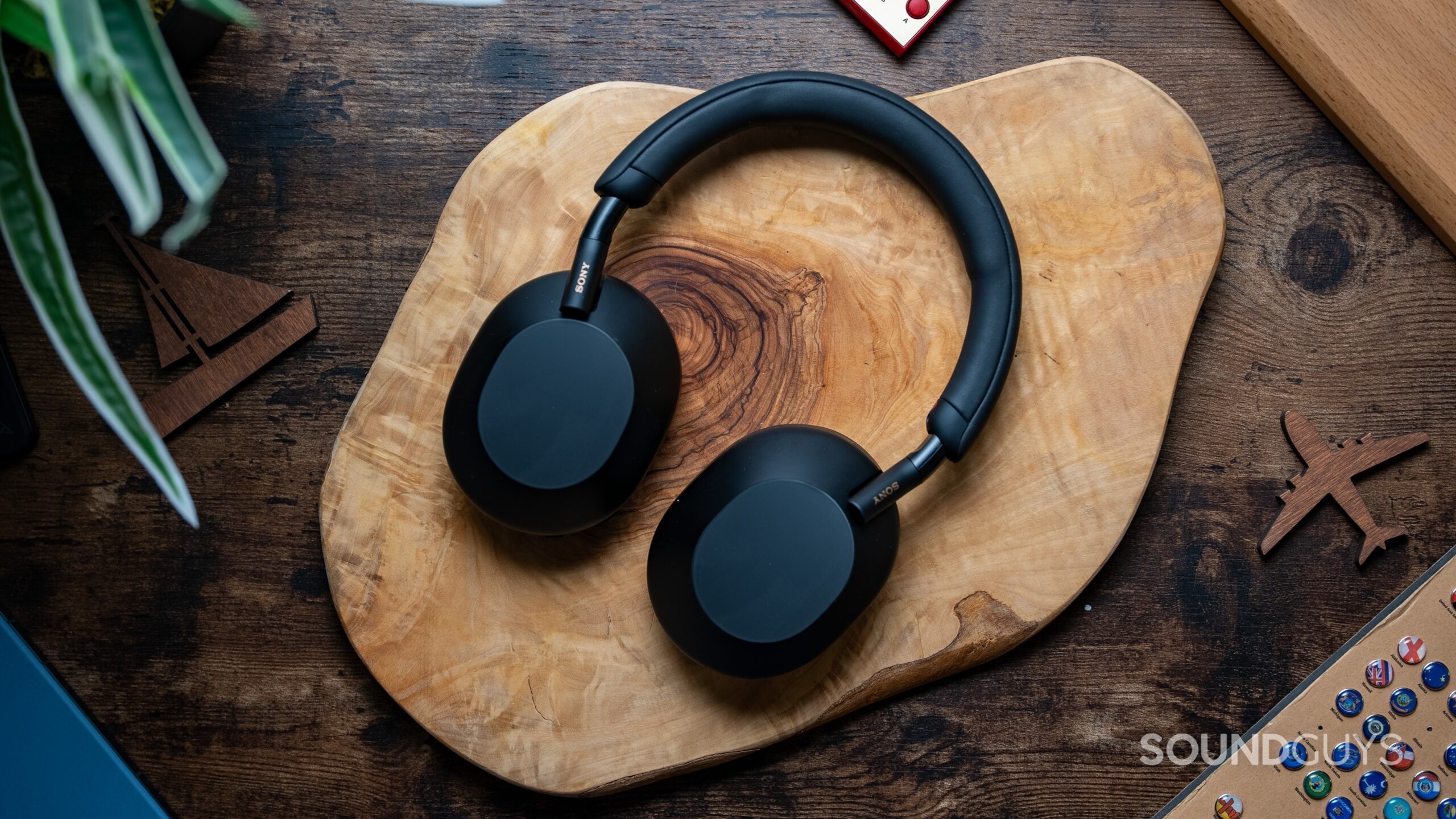
Reasons to Buy:
- Good ANC performance
- Customizable sound via the companion app
- Comfortable for extended wear
- Intuitive touch controls and smart features
- Good battery life
- Excellent call quality
- Find My Device support for Android
Reasons Not to Buy:
- High price point ($399)
- No IP rating for water or dust resistance
- No audio playback over USB-C connection
- Bass-heavy default sound signature may not suit all listeners
- No aptX codec support
Four years after its release, the Sony WH-1000XM5 is still one of the best wireless headphones you can buy. The ANC performance is particularly impressive, effectively reducing low-frequency sounds like engine noise and street bustle to about one-eighth of their original perceived loudness.
If you’re looking for headphones that can go with you to the office, on your next trip, or handle working from home: the Sony WH-1000XM5 is an excellent buy.
Sound quality, while not perfect out of the box, is highly customizable. The default tuning emphasizes bass and treble, which may overshadow midrange frequencies. However, a few tweaks in the companion app’s equalizer can significantly enhance the listening experience.
The WH-1000XM5’s comfort and usability also stand out. With soft leatherette ear cups and a lightweight design, they’re comfortable for extended wear. Intuitive touch controls and smart features like speak-to-chat and quick attention mode add to the overall user experience, making these headphones a versatile companion for commuters and frequent travelers.


If the Sony WH-1000XM5’s price tag is just a bit too high, the older Sony WH-1000XM4 ($278 at Amazon) still holds up as a solid option.
Quick Specs
- Battery life: 31 hours, 53 minutes with ANC on; 53 hours and 6 minutes with ANC off.
- Connections: Bluetooth 5.2 with SBC, AAC, and LDAC codecs; 3.5mm wired connection. No audio over USB.
- Protected against: No IP rating.
- Weight: 250g.
Objective measurements
Loading chart ...
We’re used to seeing this by now, but compared to more “high-end” headphones, you’ll notice the very strong bass emphasis right away. The comparatively subdued midrange (from 300Hz to around 1050Hz) might sound a bit off as it gets drowned out by the much louder highs and lows.
Loading chart ...
Canceling sounds in the range where most music is found by around 30dB, the headphones make engines, trains, and street noise drop off to about one-eighth of their original perceived loudness.
The chart below shows how the sound of the Sony WH-1000XM5 was assessed by the Multi-Dimensional Audio Quality Score (MDAQS) algorithm from HEAD acoustics.
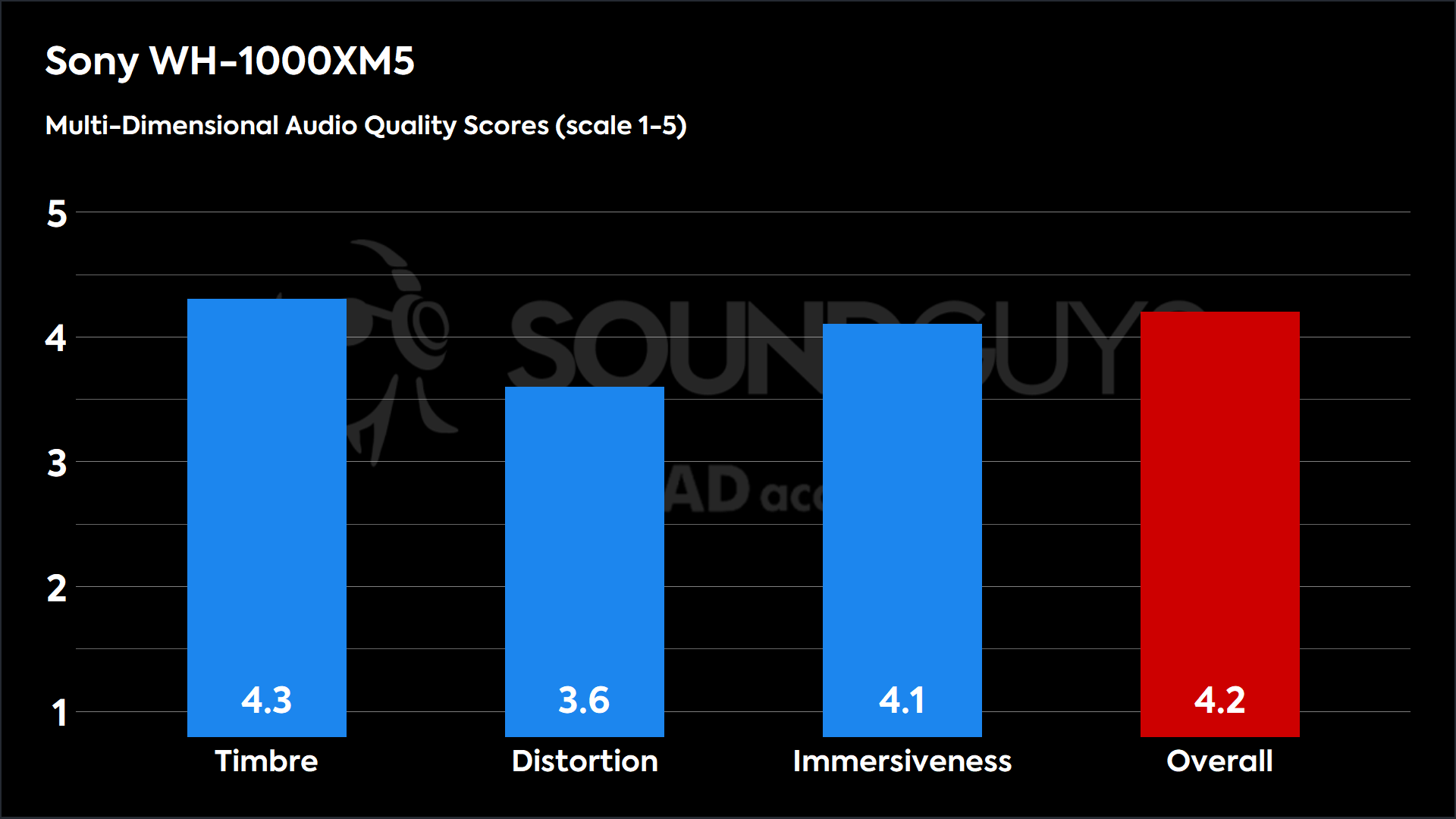
When comparing the Sony WH-1000XM5 to the WH-1000XM4, it’s clear that these headphones are closely related. Even though the XM5 model has better ANC and sound quality to boot, the Sony WH-1000XM4 is still worth getting if you don’t want to spend as much money. The fourth-generation headphones share many of the premium features found on the WH-1000XM5, and you can expect the older model to go on sale.
If you want a budget alternative, the Sony WH-CH720N ($799 at Amazon) is a good in-between option with decent noise cancelation. These headphones balance app support, good battery life, and solid functionality.

Sound quality
Connectivity options
Auto-wear detection
Best wireless headphones for iPhone owners: Apple AirPods Max
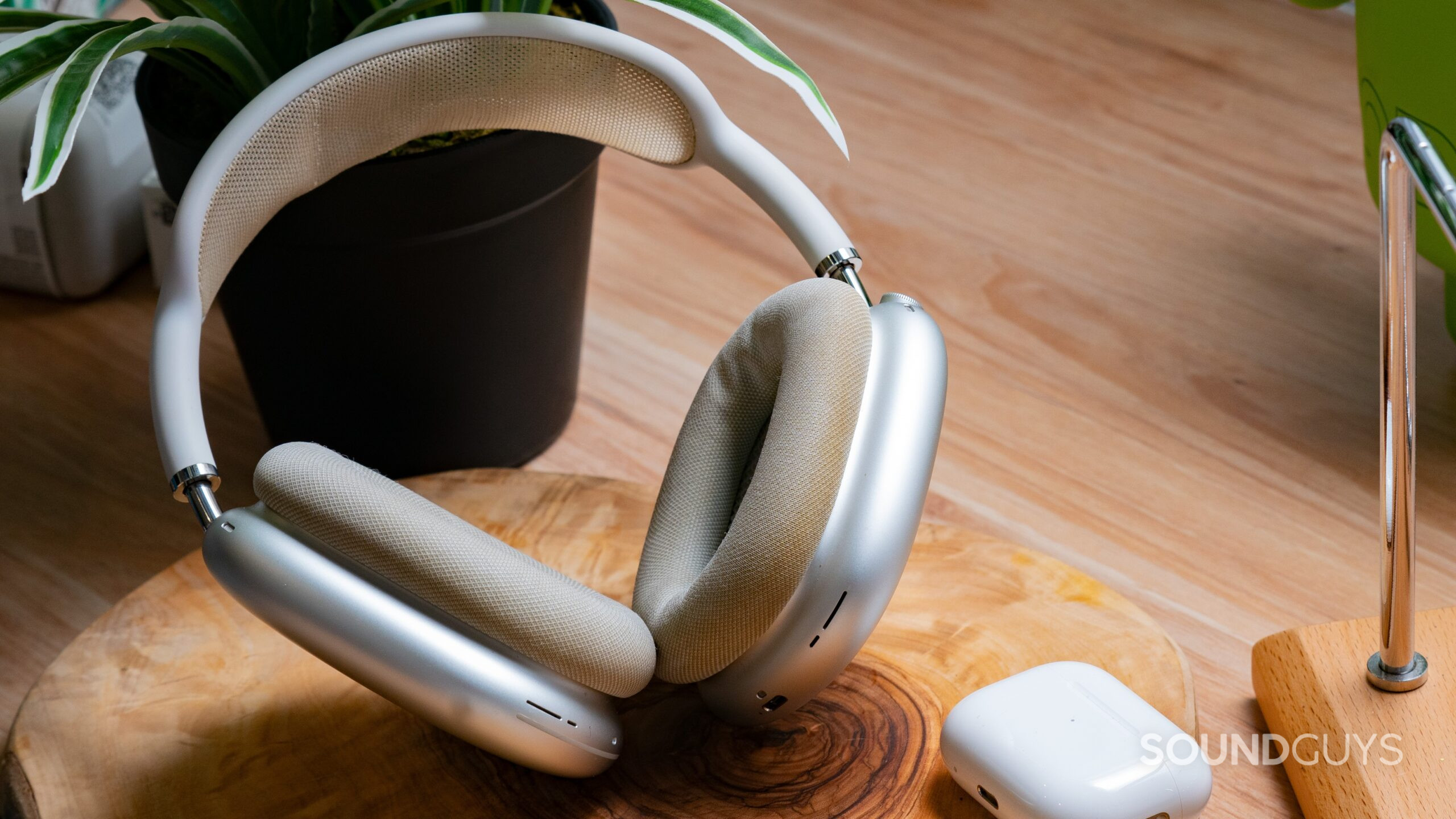
Reasons to Buy:
- Seamless integration with the Apple ecosystem
- Spatial Audio support
- Find My Device support for iOS
- Good ANC performance
- Good sound quality
- Great transparency mode
- Good battery life
Reasons Not to Buy:
- Very high price point ($549)
- Uses a Lightning connector instead of USB-C
- Limited functionality on Android or Windows devices
- No aptX or LDAC codec support
- “Smart Case” offers minimal protection
- No IP rating for water or dust resistance
- Cannot be turned off completely; only enters a low-power mode
- Microphone quality is inconsistent across devices
When it comes to seamless integration with Apple devices, nothing outperforms the AirPods Max. The sound signature is clear and pleasing, with a slight boost in the low end that enhances most genres without overpowering the mix. The ANC performance is outstanding, effectively blocking low-frequency noises better than most competitors. The transparency mode is equally impressive, allowing you to stay aware of your surroundings without compromising audio quality.
If you live in the Apple ecosystem, the AirPods Max are the best over-ears for audio.
The build quality is pretty good, with sturdy metal construction and comfortable ear pads (although if you do go with white, make sure to keep them clean, as they can yellow over time). However, the weight is noticeably heavy during extended use. The digital crown for controls is smooth and intuitive, though it can be accidentally triggered when adjusting the headphones.
While the AirPods Max shines in the Apple ecosystem, it has limitations with other platforms. The lack of a 3.5mm jack and the requirement for additional adapters for wired use is frustrating. The “smart” case provides minimal protection, and the inability to properly power off the headphones is a concern for battery life.


Quick Specs
- Battery life: 21 hours with ANC on and just over 21 hours with ANC off.
- Connections: Bluetooth 5.0 (SBC, AAC codecs); Wired via optional Lightning to 3.5mm cable (sold separately).
- Protected against: No IP rating.
- Weight: 385g.
Objective measurements
Loading chart ...
The frequency response follows our own headphone preference curve for the most part, with a notably reduced emphasis in the upper midrange and little extra kick in the very low-frequency sub-bass region.
Loading chart ...
The AirPods Max has comparable noise canceling performance to the Sony WH-1000XM5, attenuating the perceived loudness of external noises by over 80% across the frequency spectrum.
The chart below shows how the sound of the Apple AirPods Max was assessed by the Multi-Dimensional Audio Quality Score (MDAQS) algorithm from HEAD acoustics.
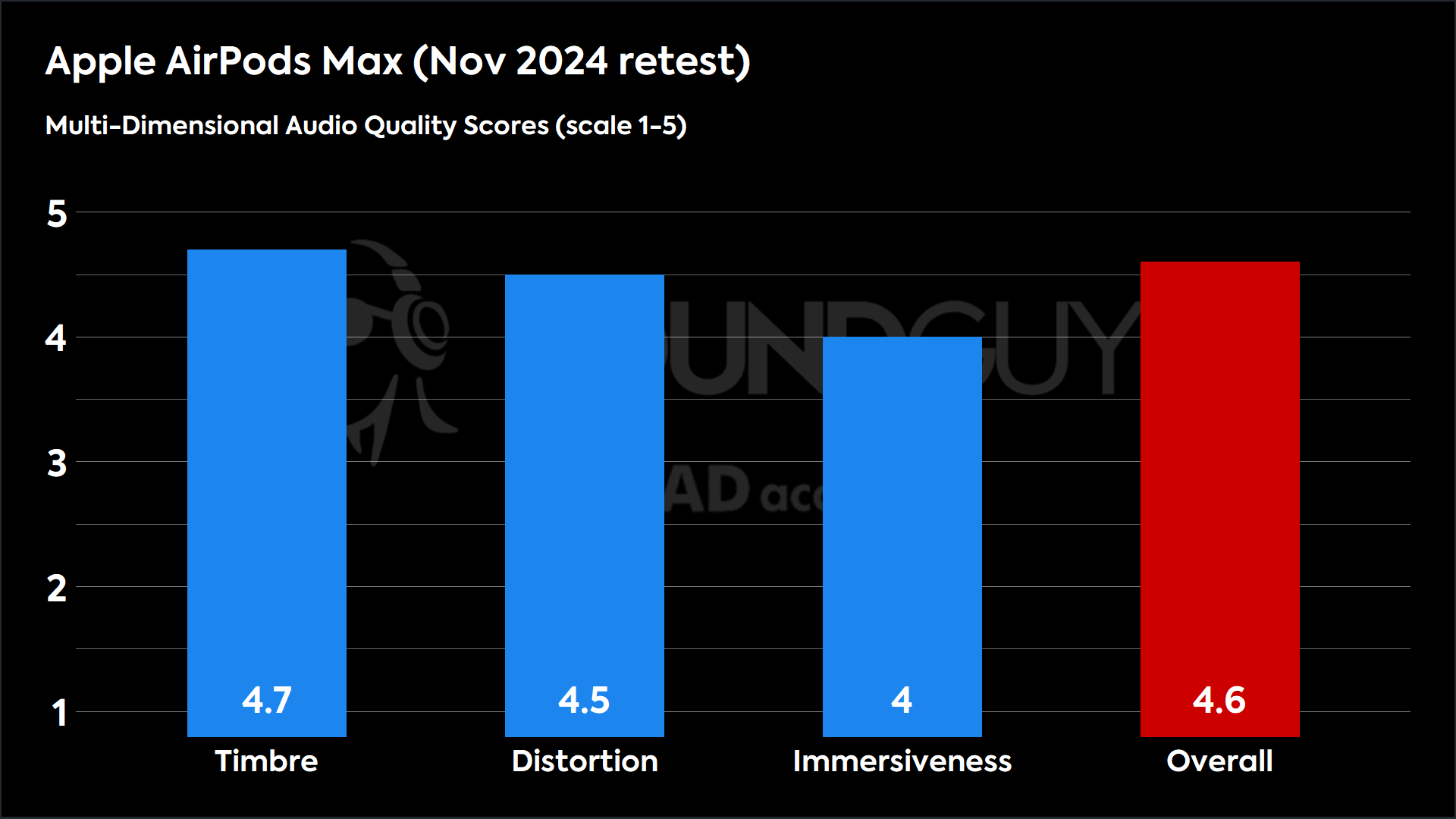
Best noise canceling headphones: Bose QuietComfort Ultra
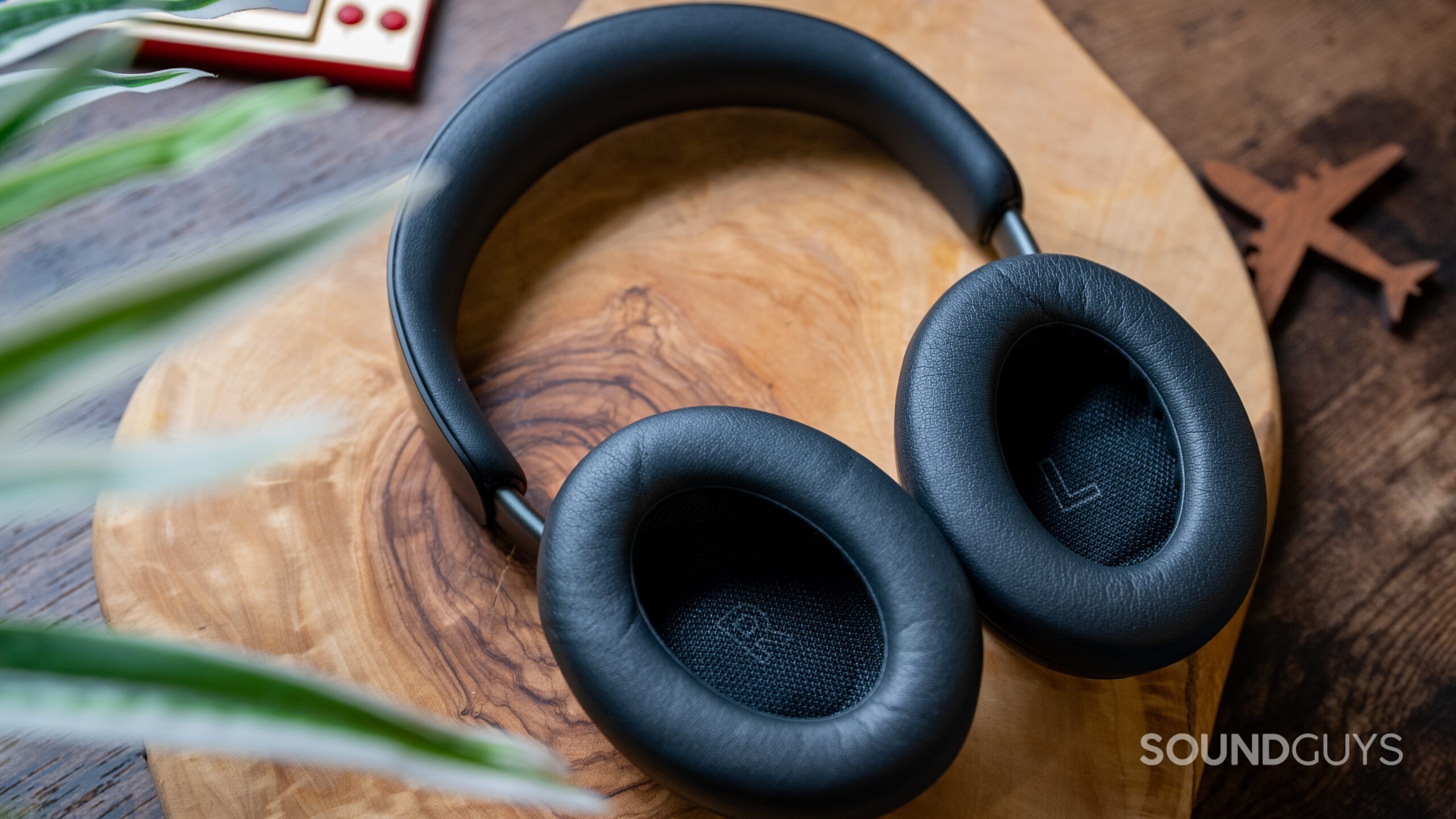
Reasons to Buy:
- Excellent ANC performance
- Good sound quality
- Comfortable for extended wear
- Supports advanced codecs like aptX Lossless and Snapdragon Sound
- Good battery life
- Effective Aware Mode (transparency mode)
- Bluetooth 5.3 with LE audio support
- Customizable EQ through the Bose Music app
Reasons Not to Buy:
- High price point ($429)
- No IP rating for water or dust resistance
- Some channel matching issues in higher frequencies
- Limited on-device controls
- No USB-C audio passthrough
- aptX Lossless only works with specific Android phones (Snapdragon 888 or newer)
The Bose QuietComfort Ultra Headphones deliver excellent active noise cancelation and impressive sound quality in a comfortable, lightweight package. The ANC performance is top-notch, reducing low-frequency noises like bus engines and airplane whines by about 87%. The passthrough mode, called Aware Mode, is also quite good, faithfully representing your surroundings without aggressive band-limiting.
The Bose QuietComfort Ultra will stay relevant for the next few years.
Sound quality is a strong point, with a well-balanced profile that can be further customized through the Bose Music app’s EQ settings. The headphones use CustomTune technology to adjust the sound to your individual ear anatomy, resulting in a consistently good listening experience across users. While there are some minor channel balance issues, most listeners will find the audio quality more than satisfactory.
The headphones support advanced codecs like aptX Lossless and Snapdragon Sound, future-proofing them for upcoming developments in wireless audio. However, these features are currently limited to Android users with specific hardware. The lack of water resistance and USB-C audio passthrough are notable downsides. Still, overall, the Bose QuietComfort Ultra Headphones offer a compelling package for those seeking high-quality ANC headphones.


Quick Specs
- Battery life: 27 hours, 37 minutes (with ANC on)
- Connections: Bluetooth 5.3 (SBC, AAC, aptX Lossless, Snapdragon Sound), 2.5mm to 3.5mm wired
- Protected against: No IP rating.
- Weight: 253g
Objective measurements
Loading chart ...
Our headphone preference curve can be used to compare the response to what we think they should sound like, but remember that these headphones can adjust their sound to meet your biology with their CustomTune feature.
Loading chart ...
The large, dense ear pads do a great job sealing to your head, leading to excellent isolation, and the Bose QuietComfort Ultra Headphones do a rock-solid job of dispelling outside noise. In the real world, this means that noises like bus engines, train screeches, and airplane whines will have their loudness reduced by about 87% — not too shabby.
The chart below shows how the sound of the Bose QuietComfort Ultra was assessed by the Multi-Dimensional Audio Quality Score (MDAQS) algorithm from HEAD acoustics.
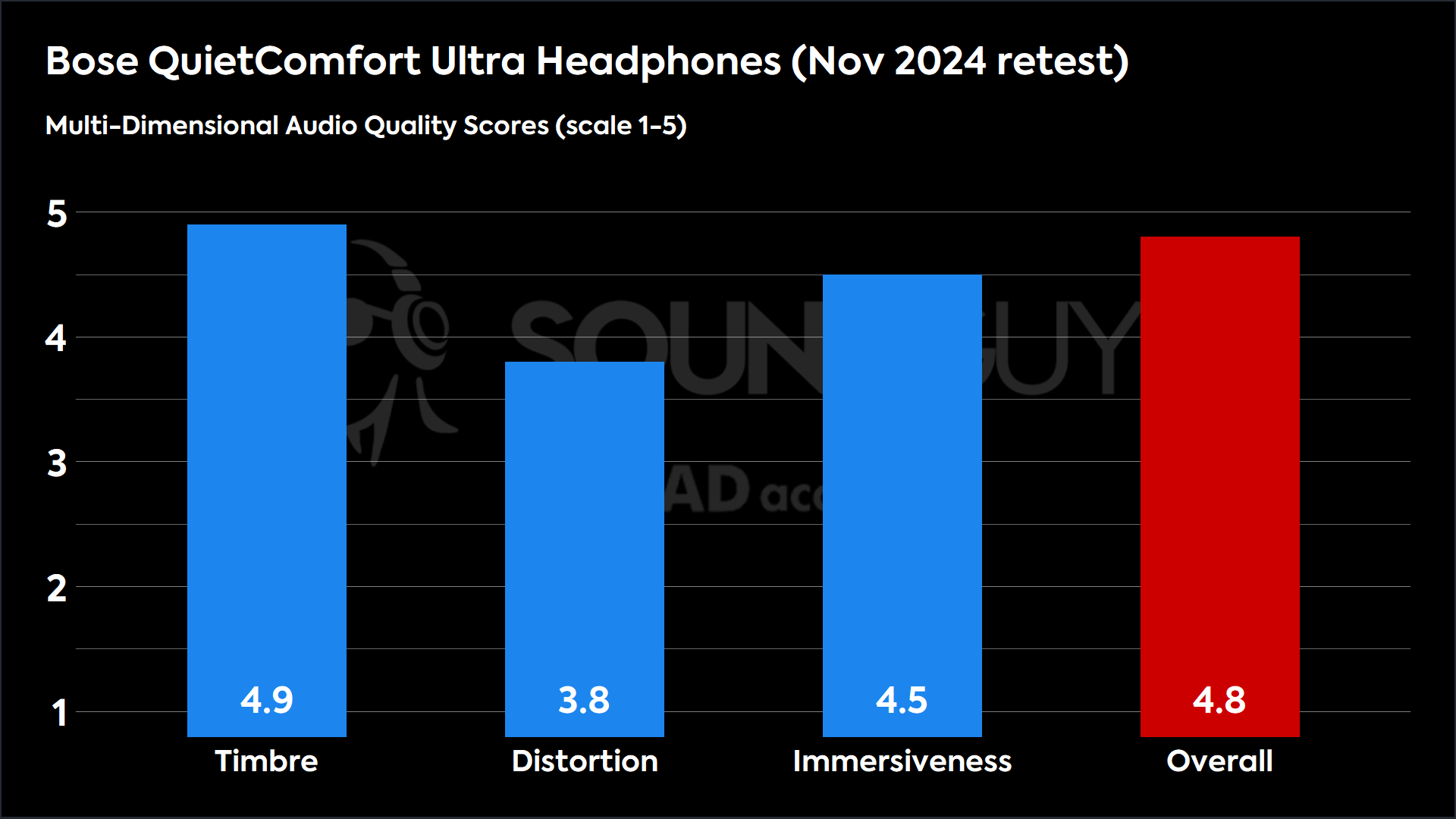
Best wired open-back headphones: HiFiMan Sundara
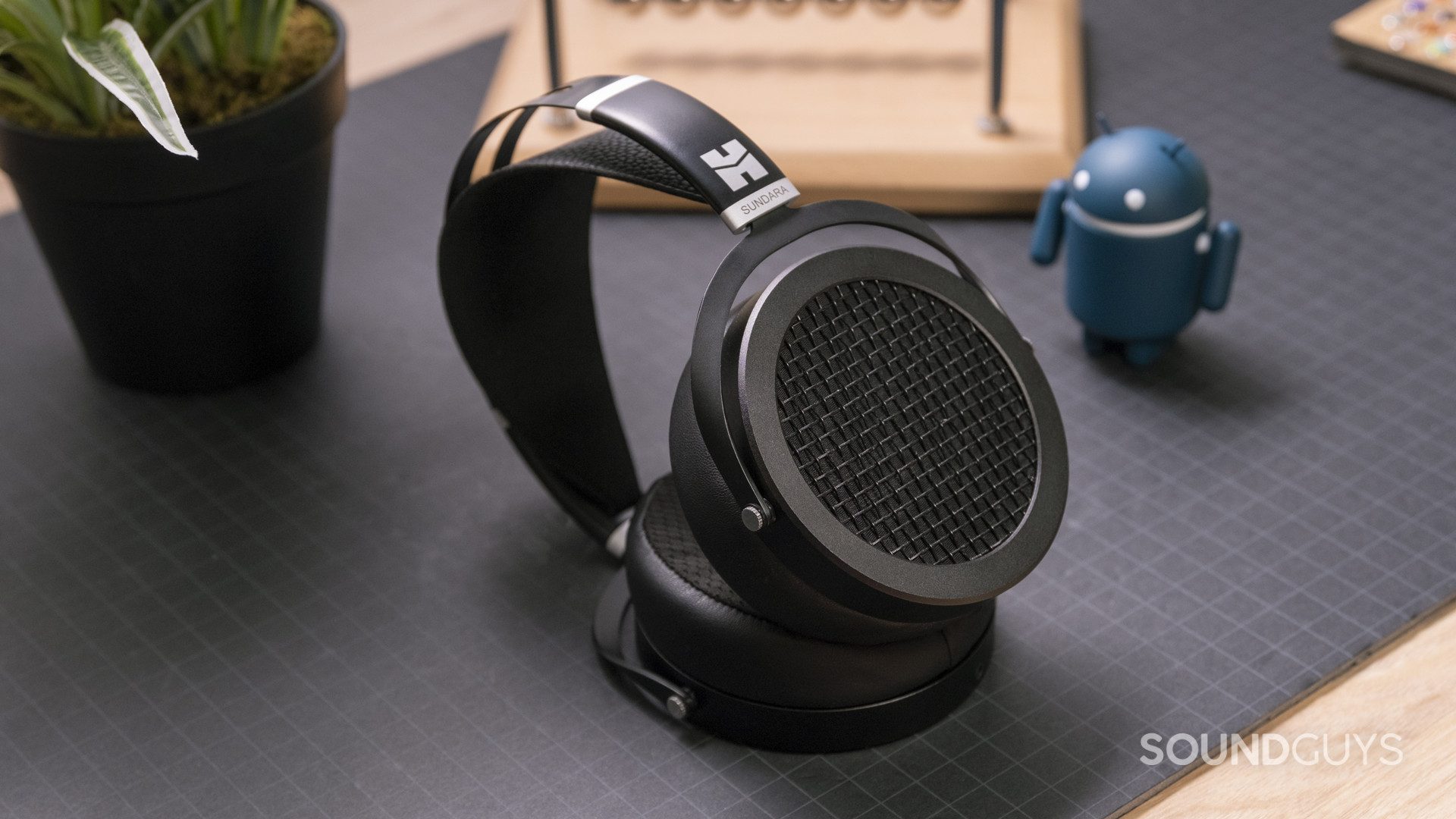
Reasons to Buy:
- Excellent sound quality with low distortion
- Comfortable design with glasses-friendly ear pads
- Good value for high-end audio performance
- Minimal need for equalization out of the box
- Durable build quality with metal construction
Reasons Not to Buy:
- Heavy
- Open-back design offers no noise isolation
- Requires a powerful audio source to drive effectively
- Not suitable for portable use or noisy environments
- No built-in microphone
The HiFiMan Sundara is ideal for dedicated home listening setups where audio quality is the primary concern. While its open-back design may not make it suitable for commuting or office use, it offers an accessible entry point into high-end audio for enthusiasts looking to elevate their listening experience.
The HiFiMan Sundara stands out as an exceptional entry-level planar magnetic headphone.
The Sundara’s frequency response is remarkably close to our ideal curve, with only slight deviations in the high frequencies. This translates to a balanced, accurate sound reproduction across the spectrum. The planar magnetic drivers excel in dynamic accuracy, providing fast response times and low distortion. This results in clear, detailed audio, especially noticeable in impulsive sounds like drum hits or string plucks.
Comfort is a key feature of the Sundara, with angled ear pads that accommodate glasses wearers and a suspension band that helps distribute the headphones’ substantial weight. However, at 372g, they may cause fatigue during extended listening sessions for some users.

Objective measurements
Loading chart ...
In a word, the HiFiMan Sundara sounds excellent. While there’s a slight deviation giving a tad of emphasis to highs, the Sundara frequency response follows our studio curve exceptionally well. Sure, some will point out that bass rolls off under 50Hz, but most open-backed headphones have an extremely difficult time with bass to begin with. And, if you have an amplifier you can give it a little help with some equalization. There’s a bit of a dip at 11.4kHz, but that’s more dependent on how the headphones sit on your ears, so don’t try to equalize that out.
Loading chart ...
If you’re hoping the HiFiMan Sundara will block out your surroundings, open-back headphones don’t really do that. They’re not designed to isolate you from the outside world, but that’s by design: an open back means it’s a lot easier to avoid the complications of having a sealed volume of air behind the headphone drivers, and that can allow for better performance of the working headphone parts themselves.
Best wired closed-back headphones: Beyerdynamic DT 770 PRO
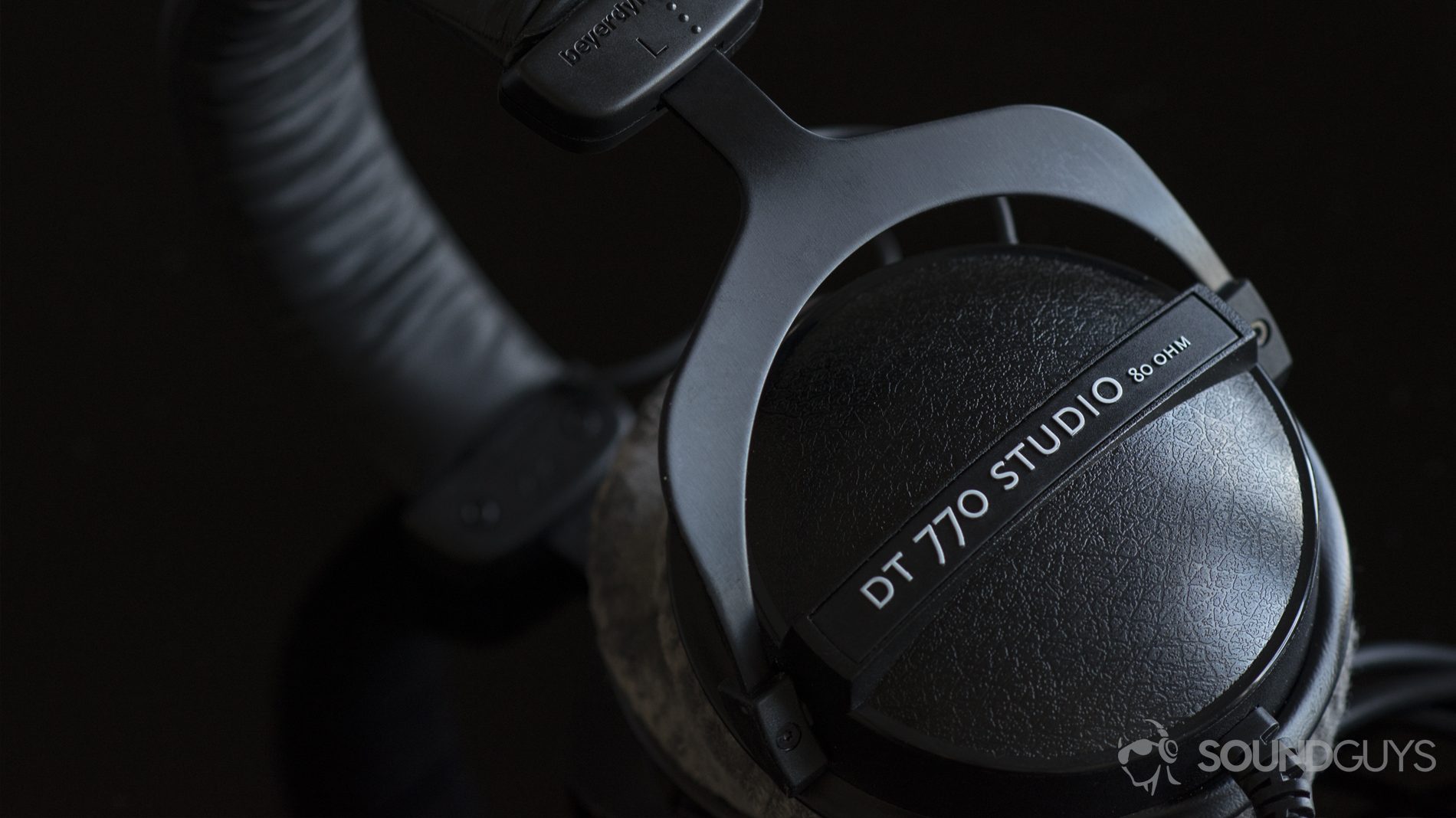
Reasons to Buy:
- Durable construction
- Comfortable design with velour ear pads
- Clear and detailed sound quality
- Good value for professional-grade headphones
- Decent noise isolation for studio use
- Replaceable ear pads for extended longevity
- Comes with a 1/4-inch adapter for versatile connectivity
Reasons Not to Buy:
- Emphasized high frequencies might be fatiguing for some listeners without EQ
- Bulky design not ideal for portable use
- Lack of modern features like a detachable cable or built-in microphone
- May require an amp for optimal performance with higher impedance versions
The Beyerdynamic DT 770 PRO (80Ω) features sturdy construction with metal components in the headband and ear cup forks, complemented by hard plastic ear cups. This design ensures longevity, making them ideal for the rigors of studio use. Comfort is a key feature, with velour ear pads that are particularly suitable for users with glasses and those requiring extended wearing periods.
These closed-back headphones have been a staple in the music industry for years.
Sound-wise, these headphones offer a clear and detailed audio profile, with a notable emphasis on high frequencies. While this can provide excellent clarity, some users might find it slightly bright without equalization. The closed-back design provides decent noise isolation, making them suitable for tracking and monitoring in studio environments.
The DT 770 PRO is an excellent choice for music creators, studio professionals, and audiophiles who prioritize durability, comfort, and clear sound reproduction in a closed-back design. However, their bulky build and long cable make them less suitable for casual, on-the-go listening.

Objective measurements
Loading chart ...
The Beyerdynamic DT 770 PRO headphones exhibit a frequency response that closely aligns with our preference curve, with strong, accurate lows without being muddy or over-emphasized like consumer-friendly headphones. The mids can take a bit of a backseat, particularly noticeable in instrument-heavy tracks. However, the most distinctive characteristic is a very strong emphasis in the highest frequencies, which can be potentially grating after a while.
This tuning allows for clear reproduction of cymbal shimmers and string instruments but may sometimes result in a shrill ringing that could benefit from equalization. Overall, the DT 770 PRO’s frequency response favors accuracy and detail over a more consumer-oriented sound signature.
Loading chart ...
While it won’t knock your socks off, the Beyerdynamic DT 770 PRO blocks outside noise from reaching your ear fairly well, though it’s mostly sound that’s higher-pitched than middle-C. If you’re going to be keeping the DT 770 PRO in the studio, it should be more than adequate for tracking or monitoring. However, it should do okay out on the street if you elect to take it outside.
Best headphones under $200: Sennheiser ACCENTUM Wireless
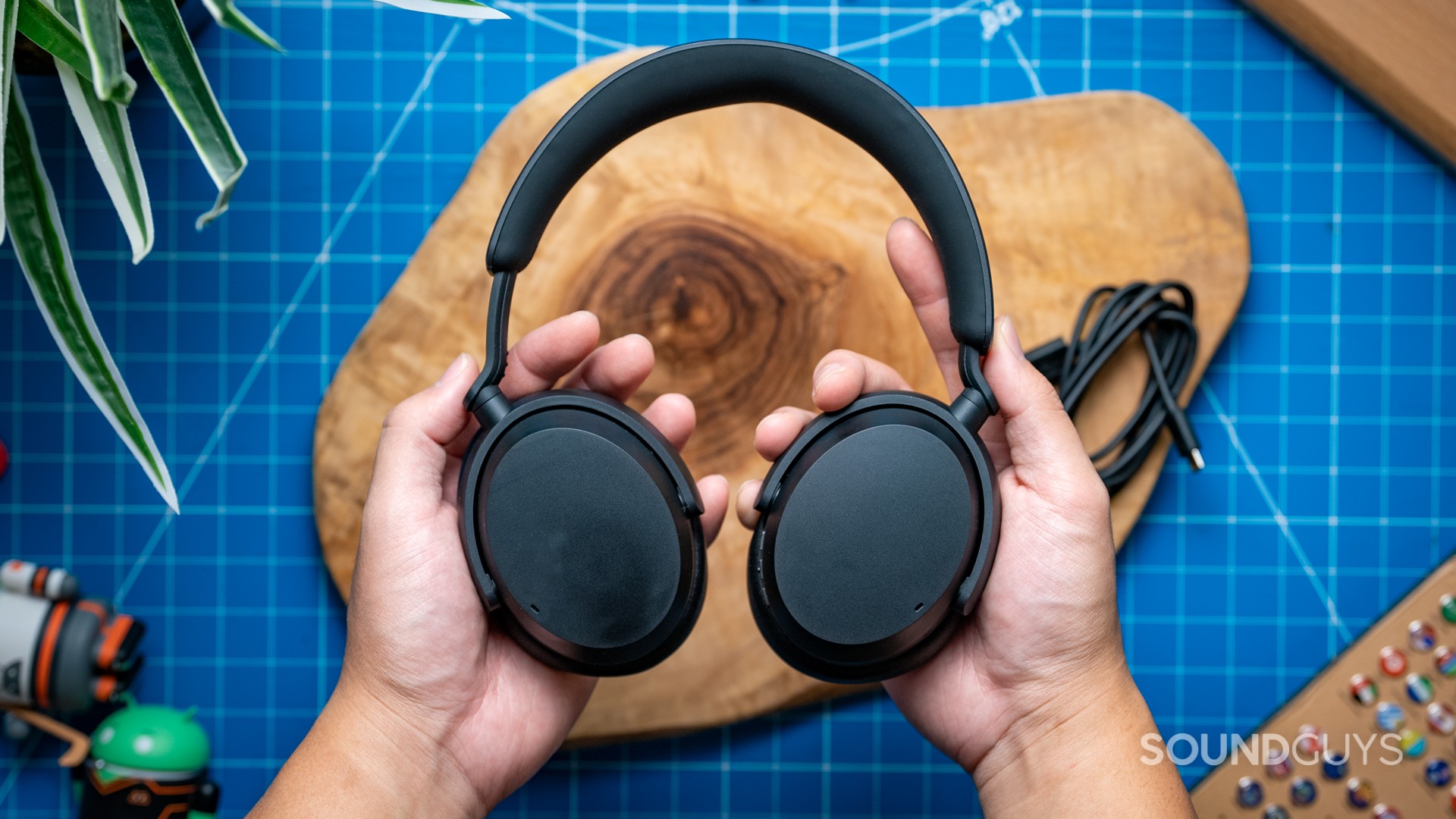
Reasons to Buy:
- Affordable price point for ANC headphones
- Lightweight and comfortable for long listening sessions
- Good sound quality with customizable EQ via app
- Impressive battery life
- Support for aptX and aptX HD codecs
- Wired audio via USB-C
- Decent passive noise isolation
- Simple and intuitive controls
Reasons Not to Buy:
- ANC performance is weaker compared to top-tier competitors
- No IP rating for water/sweat resistance
- Microphone struggles with noise rejection and wind noise
- No carrying case included
- Will not support LE Audio in the future
- Leatherette ear pads may cause issues for glasses wearers
- No advanced features like head tracking
The Sennheiser ACCENTUM Wireless offers a compelling mix of features at a more affordable price point compared to top-tier ANC headphones. These lightweight headphones provide impressive comfort for extended listening sessions, with adequate padding that suits most users.
This is one of the best value buys on the market at the moment.
Sound quality is a strong point, with a well-balanced profile that leans slightly towards enhanced sub-bass. The 5-band equalizer in the Sennheiser Smart Control app allows for fine-tuning to personal preferences. While the ANC performance is decent, reducing low-frequency noise by up to 75%, it falls short of the noise canceling capabilities of more expensive competitors.
The headphones lack a 3.5mm jack, which may disappoint some users. However, they do support USB-C audio for lossless listening. The Smart Control app offers additional features like sidetone adjustment and device management.
The microphone quality for calls is adequate but struggles with noise rejection in some environments. Overall, the Sennheiser ACCENTUM Wireless represents an excellent choice for budget-conscious consumers who prioritize sound quality and comfort over cutting-edge ANC performance or advanced features.


Quick Specs
- Battery life: 46 hours, 40 minutes (with ANC on).
- Connections: Bluetooth 5.2 (SBC, AAC, aptX, aptX HD) and USB-C audio.
- Protected against: No IP rating
- Weight: 222g
Objective measurements
Loading chart ...
The sub-bass is relatively intense, and there’s a narrow under-emphasis where our ears naturally boost. It doesn’t make music unlistenable, but it’s still worth noting that there’s no EQ preset or adjustment in the app that will alleviate it.
Loading chart ...
Our lab tests found that the Sennheiser ACCENTUM Wireless could physically block out 30-40dB of noise above 1kHz, which is about a 90% drop in loudness. Under 1kHz, the ANC can cancel about 15-20dB of noise, which lags behind competing headphones from Bose, Sony, and Apple. However, that still reduces the loudness of outside noise by up to 75% — still pretty good.
The chart below shows how the sound of the Sennheiser Accentum Wireless was assessed by the Multi-Dimensional Audio Quality Score (MDAQS) algorithm from HEAD acoustics.
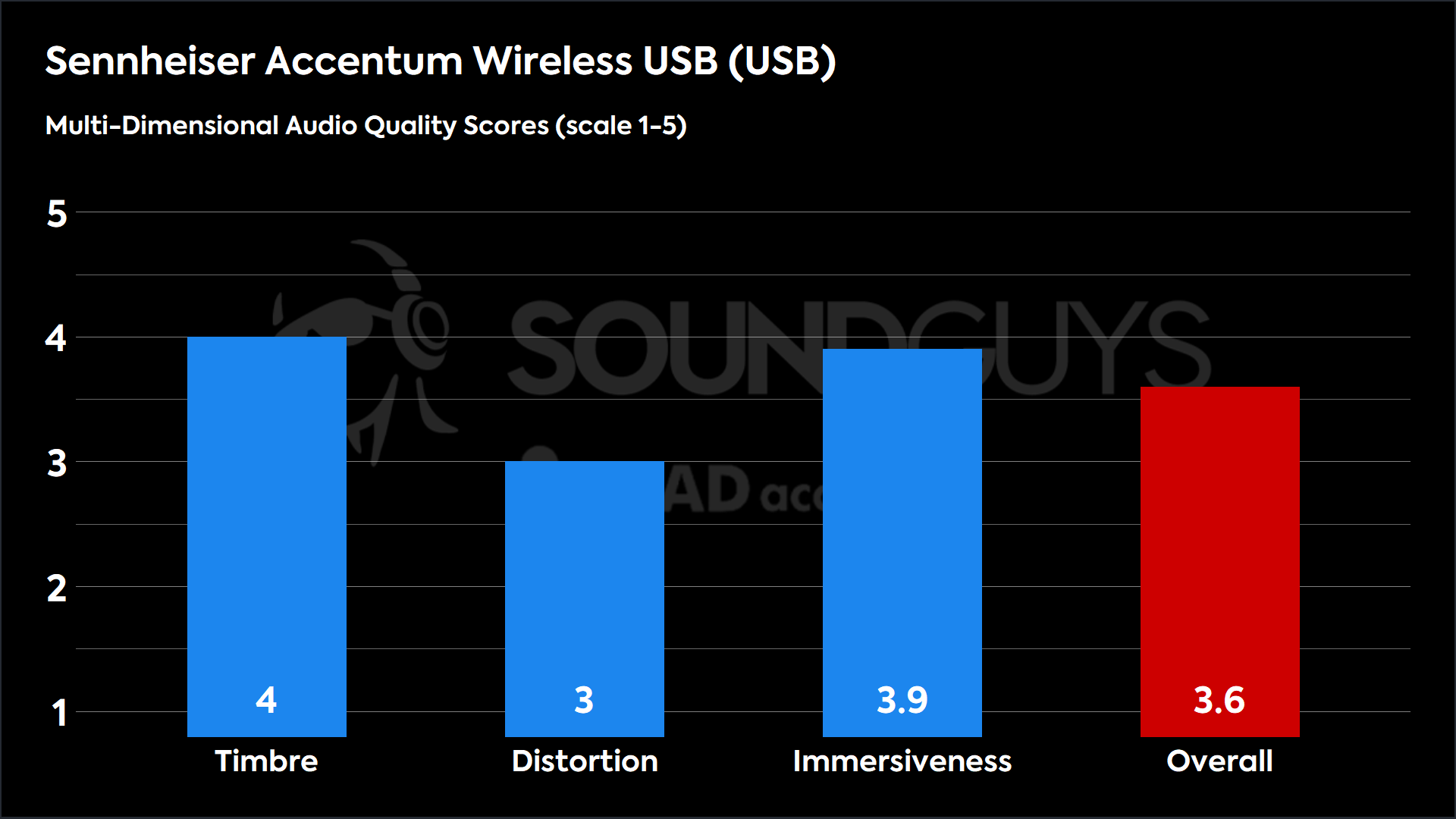
Best headphones under $100: JLab JBuds Lux ANC
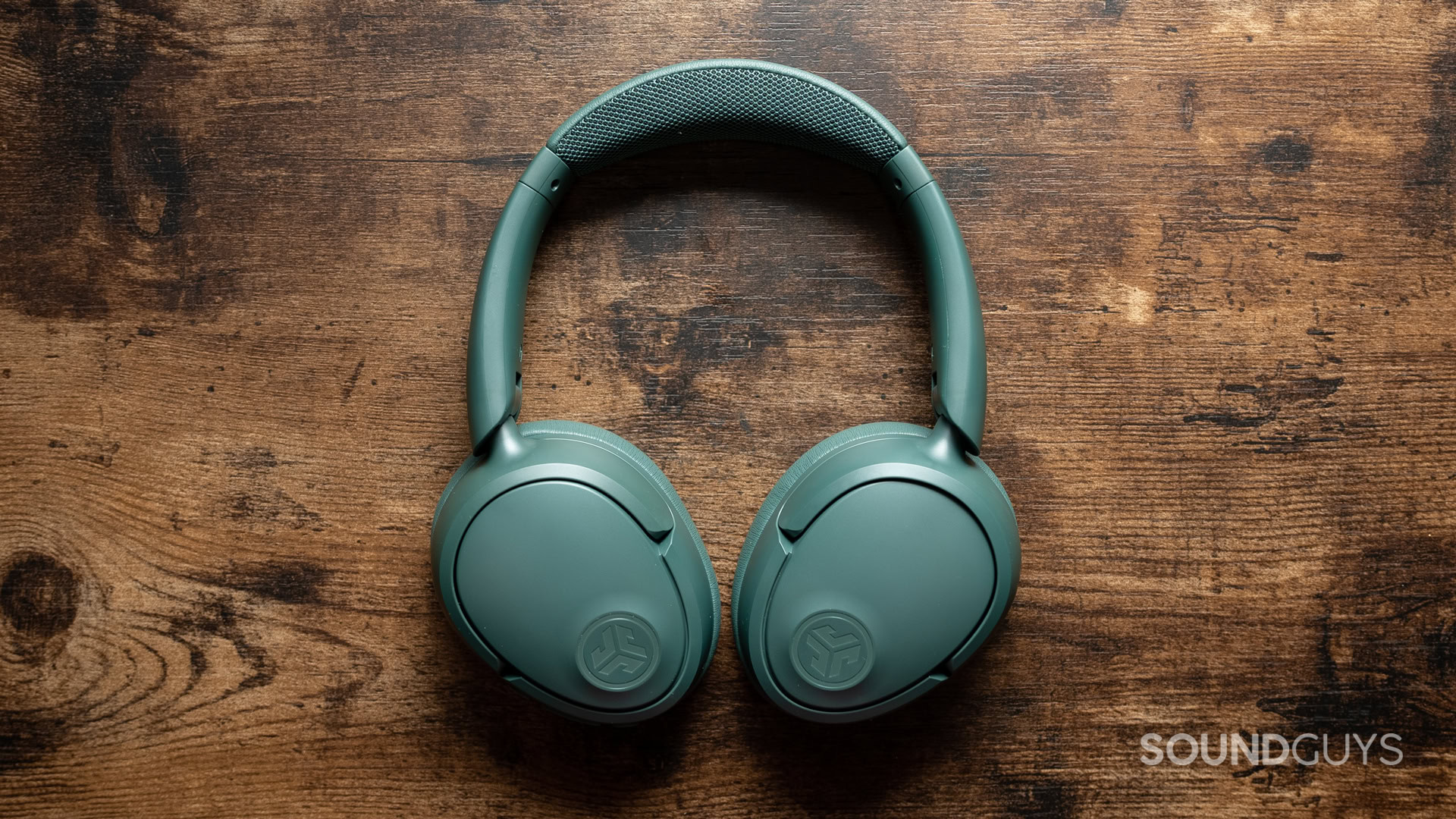
Reasons to Buy:
- Excellent value
- Comfortable for extended wear
- Impressive battery life
- Effective noise isolation, especially for high-frequency sounds
- USB-C audio support
- User-friendly app with 10-band EQ and adjustable ANC modes
- Decent microphone performance, especially in reverberant spaces
Reasons Not to Buy:
- Weaker ANC performance
- No IP rating for water/sweat resistance
- Limited to SBC codec for Bluetooth audio
- Bass-heavy sound profile may not suit all listeners
- Slight emphasis in 5-10kHz range can be fatiguing over long listening sessions
- Lacks advanced features like spatial audio
The JLab JBuds Lux ANC offers exceptional value for budget-conscious consumers seeking active noise canceling headphones. At just $79.99, these over-ear headphones deliver impressive performance in key areas.
Sound quality is a strong point, with a consumer-friendly profile that emphasizes bass and treble. While this can lead to some fatigue during extended listening sessions, it works well for commuters dealing with environmental noise. The JLab app provides a 10-band EQ for sound customization.
As far as inexpensive ANC headphones go, the JLab JBuds Lux ANC are one of the best of 2024.
The ANC performance is decent for the price, reducing low-frequency noise by 50-75% below 700Hz. The headphones excel at isolating high-frequency sounds, blocking up to 46dB in higher ranges. Comfort is also noteworthy, with well-padded ear cups and a breathable headband that accommodates glasses wearers.
Battery life is impressive, with a quick charge feature providing 4 hours of playback from a 10-minute charge. While they lack advanced features like spatial audio or high-end codecs, the JLab JBuds Lux ANC focuses on fundamentals, offering USB-C audio and a foldable design for portability.


Quick Specs
- Battery life: 44 hours, 22 minutes (with ANC on)
- Connections: Bluetooth 5.3 (SBC), USB-C audio
- Protected against: No official IP rating
- Weight: 235g
Objective measurements
Loading chart ...
Here, we can see that the JLab JBuds Lux ANC have some bass emphasis — about 2-5dB over what we like to see — from 300Hz down to 20Hz. There’s a little dip in the mids and then a large bump at 5-10kHz. This can help with spatial cues and sounds that typically get lost in mixes.
Loading chart ...
With between 10 and 20dB of noise cancelation under 700Hz, you can expect between 50 and 75% of outside noise in the lows. Still, the JLab JBuds Lux ANC shines with high-frequency noise, as the ear cups do an outstanding job of creating a seal to your head. Because of this, the headphones isolate your ears from outside noise and physically block up to 46dB of outside noise the higher in frequency you go.
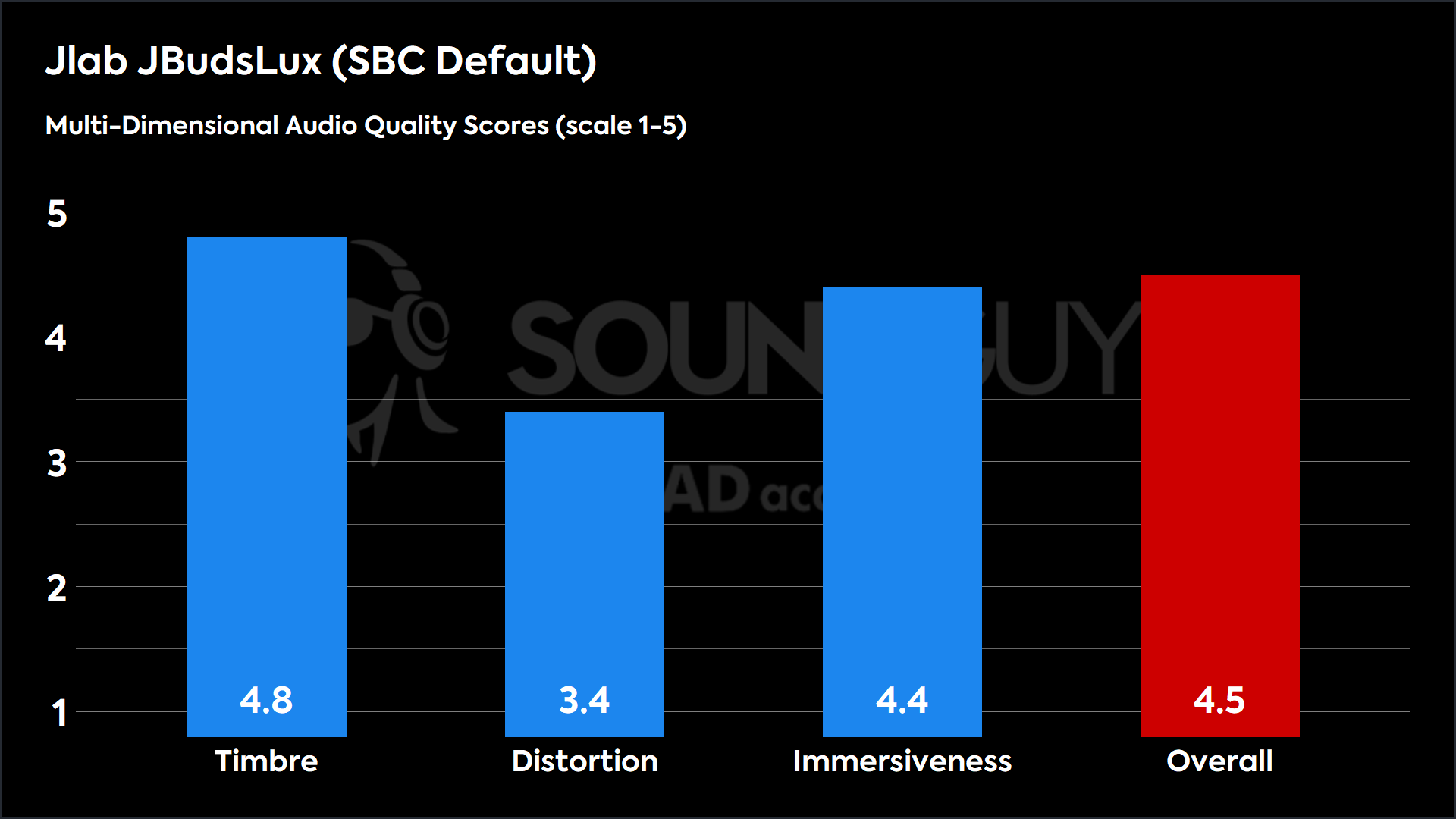
Best on-ear headphones: JBL Live 670NC
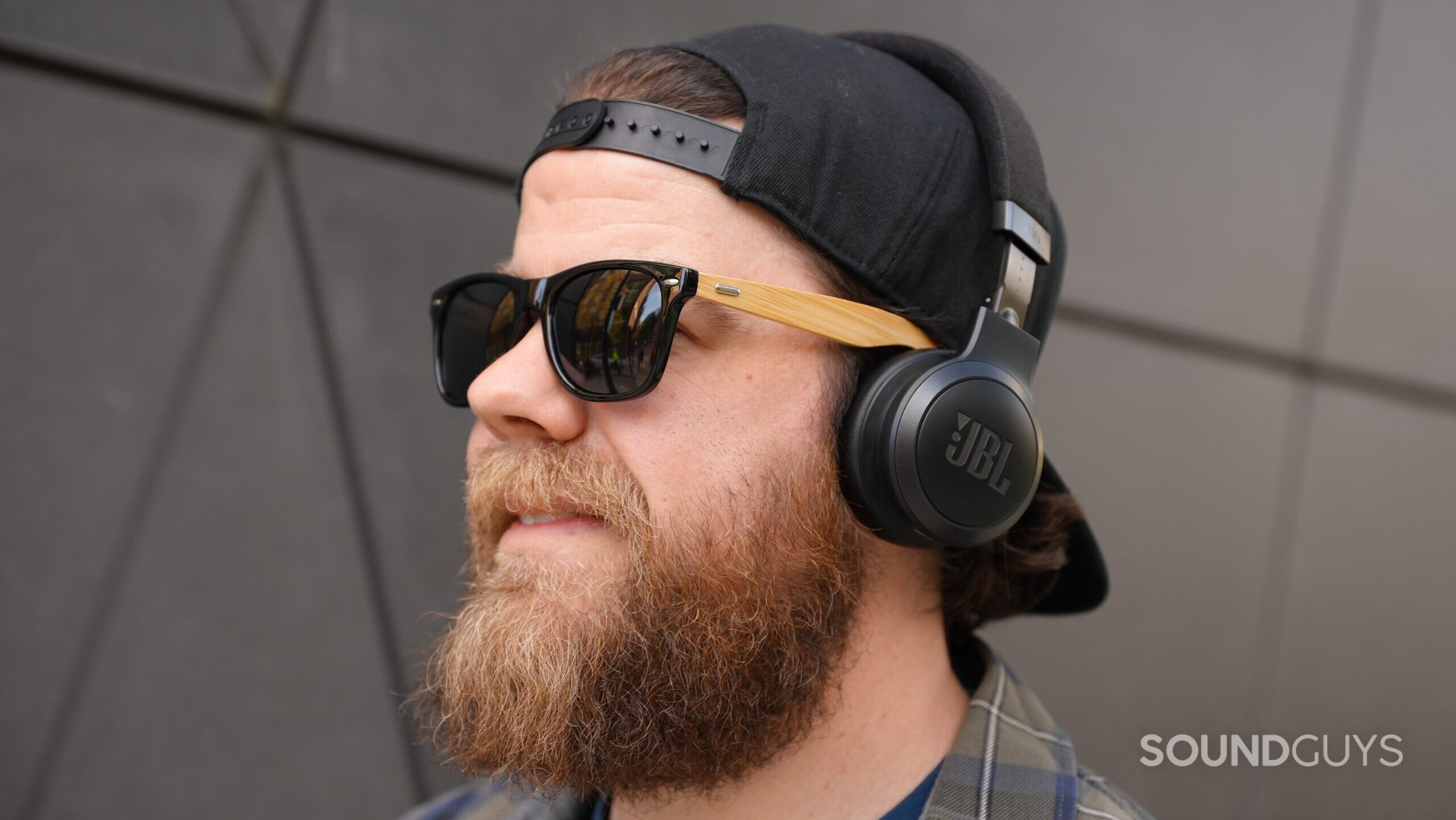
Reasons to Buy:
- Highly portable
- Impressive battery life
- Effective noise cancelation
- Comfortable for extended wear
- Customizable sound via JBL Headphones app
- Bluetooth Multipoint
- Wired connection option (3.5mm jack)
Reasons Not to Buy:
- No IP rating for water/sweat resistance
- Limited codec support (SBC/AAC only)
- Cloth headband may be difficult to clean
- Bass-heavy default sound may not suit all listeners
The JBL Live 670NC offers a comfortable fit with a foldable design for easy portability. The headphones come equipped with both touch and physical controls, providing users with flexible options for managing playback and settings. They’re particularly well-suited for commuters and travelers who value portability and features like ANC and customizable EQ.
The JBL Live 670NC is perfect for commuters, travelers, and casual listeners.
Sound quality is exciting and enjoyable for most listeners, and the JBL Headphones app’s EQ settings allow customization. Battery life is impressive, lasting over 54 hours in our testing with ANC enabled. The headphones also offer effective noise cancelation, especially for low-frequency sounds, and include an Ambient Aware mode for situational awareness.
Overall, these are the best-value on-ear headphones you can buy right now.

Quick Specs
- Battery life: 54 hours, 57 minutes with ANC on
- Connections: Bluetooth 5.3 with SBC and AAC codecs; 3.5mm wired connection
- Protected against: No IP rating
- Weight: 152g
Objective measurements
Loading chart ...
While the JBL Live 670NC’s frequency response goes way beyond our preference curve in the lows and high end, this is all part of the “exciting” sound that casual listeners will enjoy. As shown in the chart above, we see a boost in the low end, a slight dip in the mid frequencies, and a splash of high-end treble to help bring out sonic production details like reverberated vocal tones or a drummer’s cymbal work.
Loading chart ...
As expected, passive isolation is most effective at blocking external noise in the higher frequencies above 1kHz. Active noise canceling works best at canceling out low-frequency noise below 1kHz. ANC performance is good, approaching 30dB of attenuation around 250Hz, helping eliminate engine rumbles and street noise.
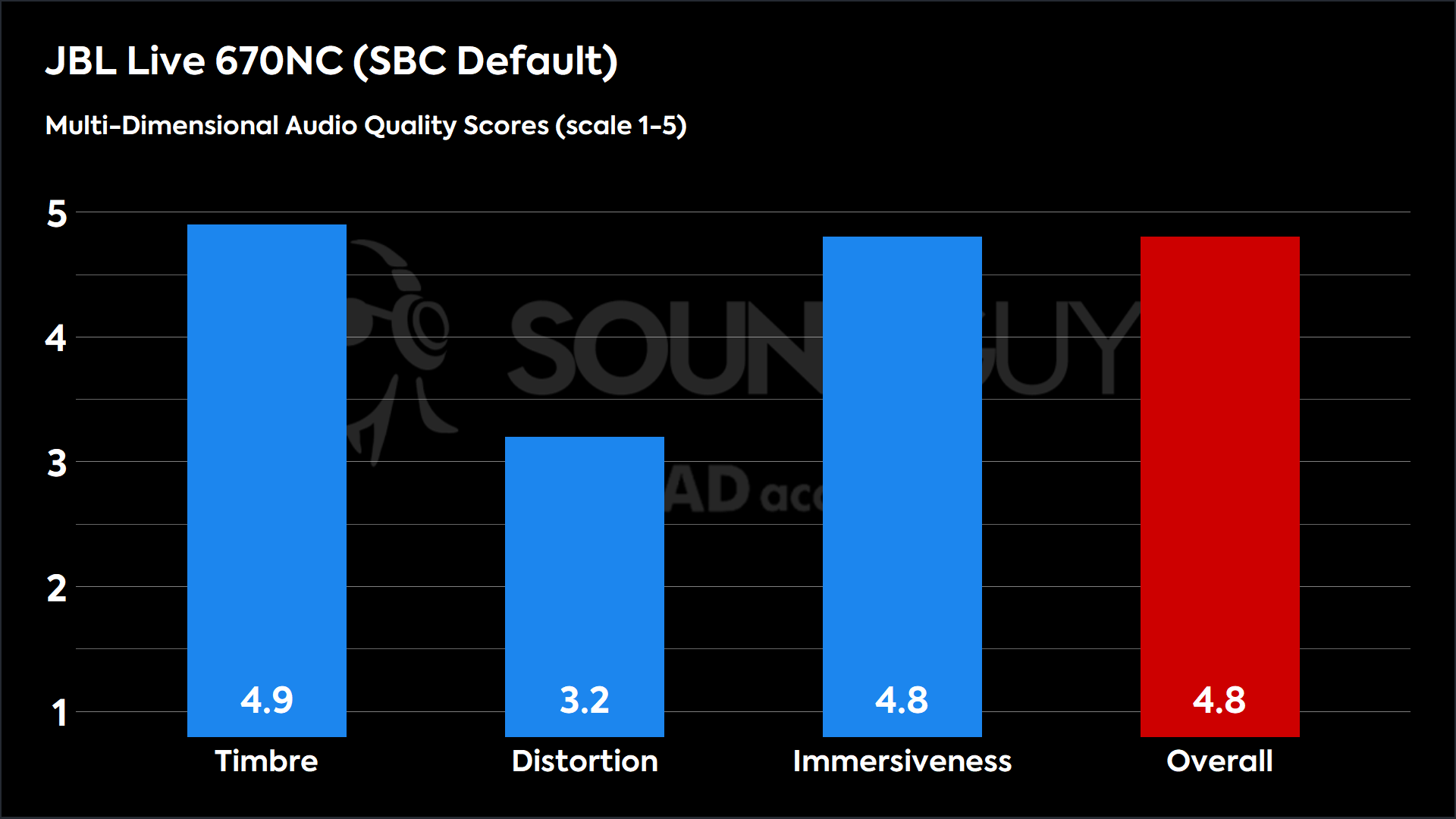
The best and only brain-tracking headphones: MW75 Neuro
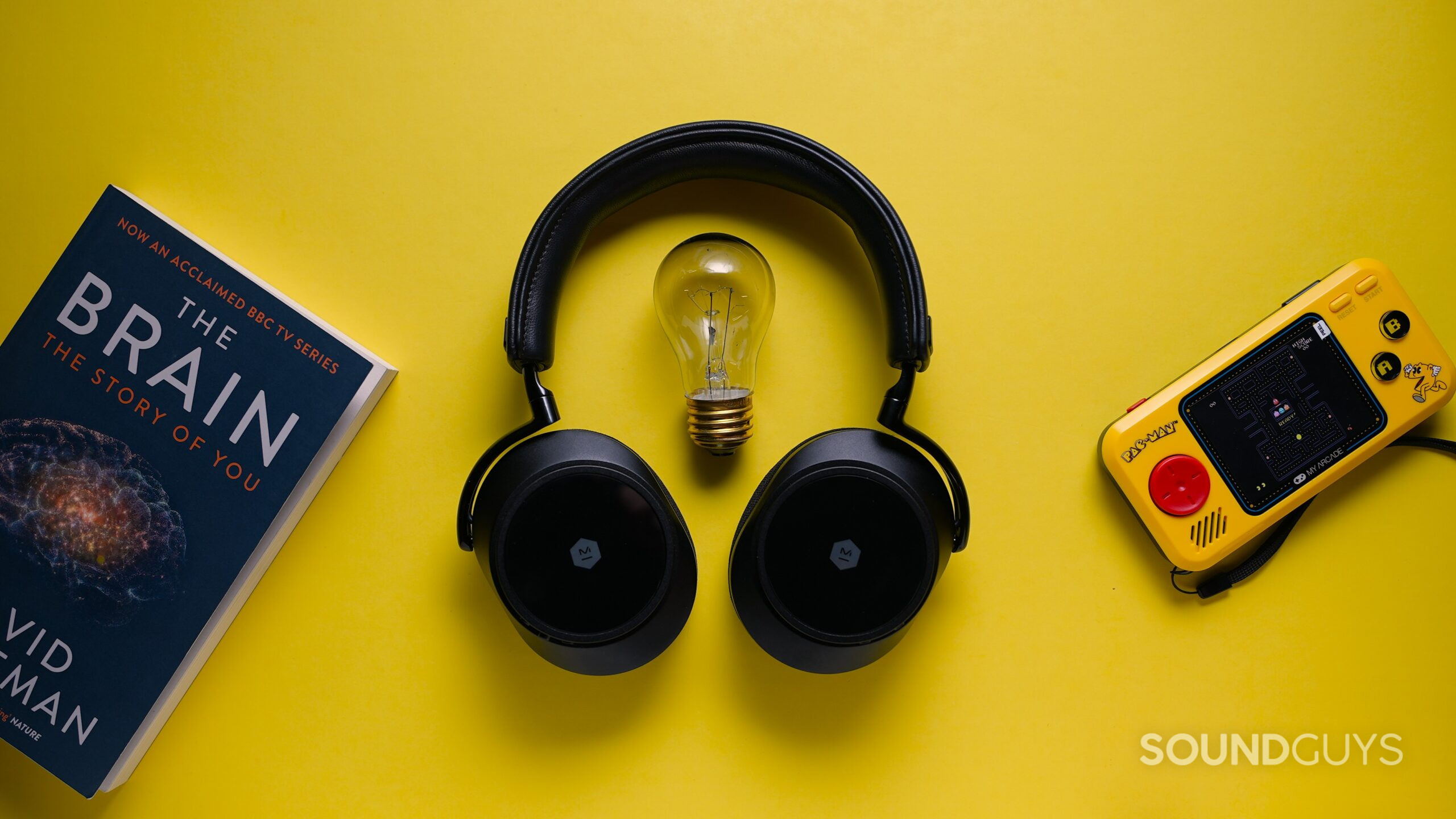
Reasons to Buy:
- Innovative EEG sensors for real-time focus tracking
- Premium build quality with high-end materials
- Comfortable for extended wear
- Comprehensive connectivity options (Bluetooth 5.2, aptX adaptive, wired)
- Excellent battery life
- Insightful companion app for productivity improvement
Reasons Not to Buy:
- Expensive
- The default sound signature is overly bright
- Noise cancelation is good but not best-in-class
- Microphone struggles in noisy environments
The MW75 Neuro, a collaboration between Master & Dynamic and Neurable AI, represents a groundbreaking fusion of high-end audio and cognitive technology. These headphones feature EEG sensors in the earpads that monitor brain activity, particularly focus levels, in real time.
Sound quality is mixed, with a bright default signature that may not appeal to all listeners. The frequency response shows some deviations from ideal, with subdued sub-bass and a sharp treble peak. However, a 5-band equalizer in the companion app allows for customization.
Loading chart ...
There’s also a noticeable dip around 4 kHz, which can help reduce fatigue brought on by the high peak at 7Khz, which can bring out some perceived clarity but risks introducing sibilance (overly emphasized ‘s’ and ‘t’ sounds) and making cymbals and hi-hats overly prominent.
The brain-tracking feature, accessed through the Neurable app, provides valuable insights into focus patterns and productivity. Users can track their daily focus goals, identify peak productivity times, and potentially improve their concentration over time. This technology even shows promise for early detection of cognitive health issues.
Build quality is excellent, with premium materials ensuring comfort during extended use. The headphones offer various connectivity options and impressive battery life. While the active noise cancelation is good, reducing perceived loudness by 74%, it’s not quite at the level of top competitors.
Overall, the MW75 Neuro offers a unique blend of audio and cognitive technology for those interested in quantifying and improving their mental performance, albeit at a premium price point.

Quick Specs
- Battery life: Up to 32 hours (10 hours with EEG)
- Connectivity: Bluetooth 5.2 (AAC, aptX adaptive, SBC)
- Water resistance: Not specified
- Weight: 338g
The best headphones: Notable mentions
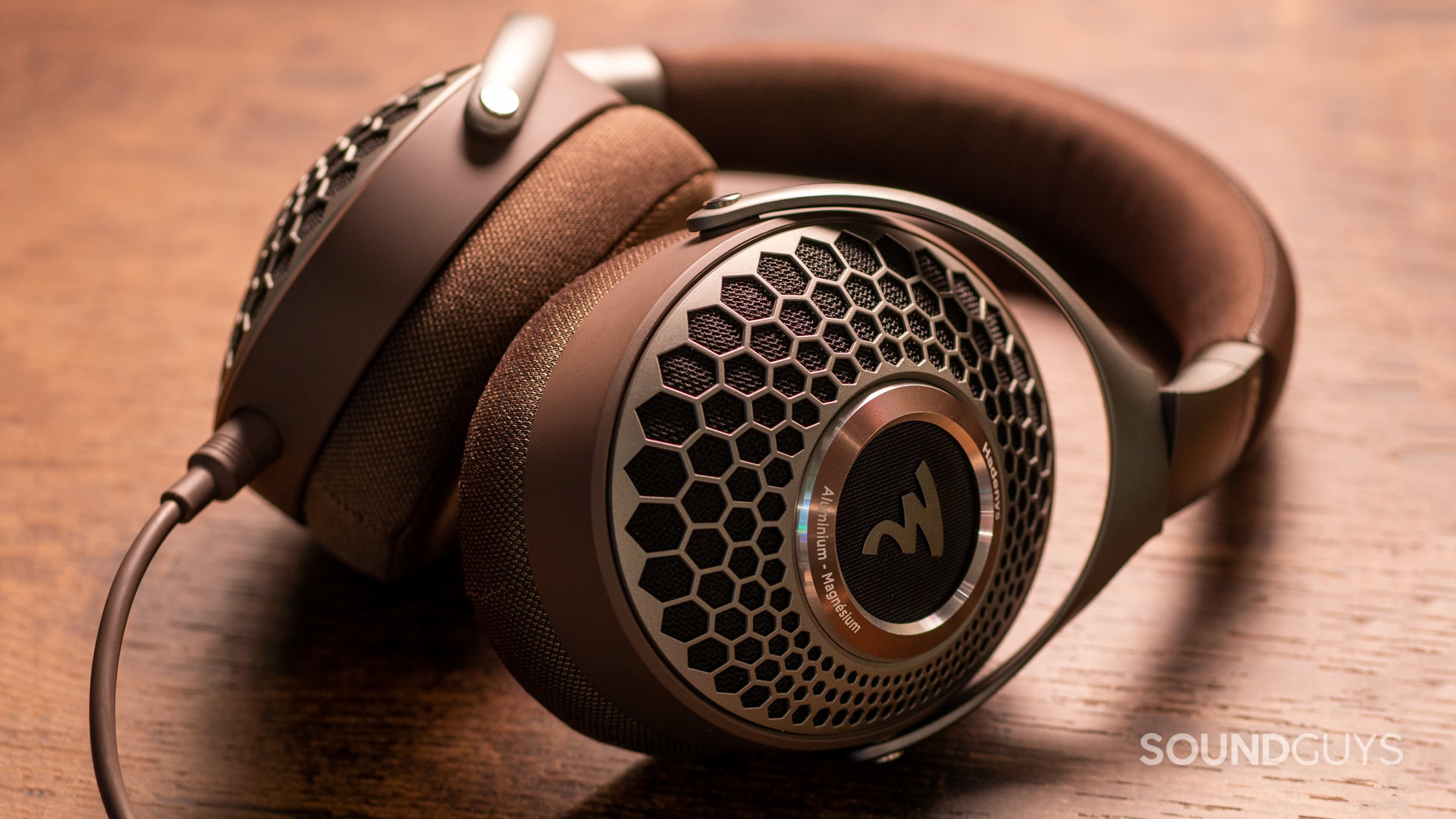
- 1MORE SonoFlow ($99.99 at Amazon): The 1MORE SonoFlow are good-sounding, feature-rich headphones that won’t break the bank. Commuters and travelers will enjoy the ANC, long battery life, and plush ear pads. Experienced listeners will enjoy decent sound and EQ options.
- AKG K371 ($176 at Amazon): These headphones sound excellent and provide a really good double-life as dependable studio monitors. Sure, these are wired cans with a rather cumbersome cable. But if you’re listening at home, mixing a track, or working at the coffee shop, these are the headphones you want.
- Anker Soundcore Space One ($99.99 at Amazon): These headphones bring most of the same features of flagship competitors for a fraction of the price.
- Anker Soundcore Life Q30 ($79.99 at Amazon): With good sound, active noise canceling, and battery life, these are some of the best-value headphones on the market. If you have a budget of $100, don’t hesitate to buy the Anker Soundcore Life Q30.
- Anker Soundcore Space Q45 ($149 at Amazon): These headphones tick most boxes for the price. The Bluetooth or wired-equipped over-ear headphones supply good codecs, AAC, and LDAC, and sound pretty good. You also get decent noise canceling as well.
- Audio-Technica ATH-M50xBT2($198 at Amazon): Enthusiasts sing the praises of the original ATH-50x for its rugged build and reliable performance. The second-generation Bluetooth version carries over everything we love about the tried-and-true wired model with LDAC support and excellent battery life. At under $200, this is a solid headset.
- Beyerdynamic DT 900 PRO X ($269 at Amazon): If wired is your sole interest with a studio-style frequency response, this is a great pick. The open-back design wears comfortably, and it gets very close to our ideal sound without reaching astronomical pricing. Its closed-back companion, the DT 700 PRO X, has less treble on tap and is another great choice.
- Bowers and Wilkins PX8 ($699 at Amazon): These are best for deep-pocketed audiophiles looking for comfortable ANC headphones to take on long travels.
- Drop x Sennheiser HD 6XX ($199 at Manufacturer site): If you’re looking for the absolute best way to spend money on headphones for the computer, Drop’s partnership with Sennheiser brings these legendary audiophile headphones down to roughly half the original asking price. Budget-conscious audiophiles would be doing themselves a disservice by not giving these a spin.
- EarFun Wave Pro ($79.99 at Amazon): If you have a limited budget, the EarFun Wave Pro are a great option. With exceptional battery life, decent ANC, and advanced connectivity, these headphones are ideal travel or commuting headphones.
- Edifier W830NB ($79.99 at Amazon): The Edifier W830NB packs plenty of value, delivering customizable sound, multiple listening modes, and a comfortable, foldable design. Whether you’re casually listening at home or blocking out the world while commuting, these headphones offer a solid listening experience without stretching your budget.
- Focal Azurys ($549 at Manufacturer site): The Focal Azurys are a competent, durable, and attractive set of headphones meant to meet the needs of keyboard warriors with deep pockets looking for a more “mature” set of headphones. They’re pricy, but hardly a poor investment.
- Focal Bathys ($699 at Amazon): The Focal Bathys are one of the best sets of headphones out there, but they’re not without their foibles — and at a pretty steep price for most consumers. If you have cash to burn you’ll love them, but there are less expensive alternatives out there that are also good.
- Focal Hadenys ($699 at Manufacturer site): The Focal Hadenys are an extremely good set of open-backed headphones that are not only durable, but sound great too. Though the cost is steep, you are getting your money’s worth.
- JBL Tune 520BT (£33.11 at Amazon Site): If you’re looking for barebones on-ears that just work, it’s hard to make a case against the JBL Tune 520BT. It sounds decent, is affordable, and does exactly what’s on the label. It’s just gravy that its modern electronics grant the use of features like Find My, rapid charging, and Fast Pair.
- Marshall Monitor III ANC ($349.99 at Amazon): If you love the classic Marshall amp design, and you are looking for versatile travel headphones, the Marshall Monitor III ANC are a good option.
- Sennheiser MOMENTUM 4 Wireless ($289.23 at Amazon): If you’re looking for a slightly more affordable set of ANC headphones in comparison to the Bose or Sony offerings: the Sennheiser MOMENTUM 4 Wireless is not a bad way to go. While its ANC is technically behind the other top-tier headphones, its sound quality is ahead of the pack—as is its battery life. Not bad for $350 USD.
- Sennheiser ACCENTUM Plus ($217.95 at Amazon): These are great for anyone looking for a mid-ground pair of ANC headphones perfect for commuting.
- Sennheiser HD 490 PRO ($399.99 at Amazon): The Sennheiser HD 490 PRO are a great option for anyone doing professional audio work. The design is tailored for producers and mixing engineers, with swappable ear pads providing sound and comfort options. With durability, versatility, and excellent sound quality, you can’t go wrong with these if you want open-back headphones.
- Sennheiser HD 600 ($399.95 at Sennheiser): Long considered one of the best headphones on the market, not much has changed in the last thirty years for the HD 600. It missed our top picks due to cost, that’s it — though you can sometimes get lucky.
- Sennheiser HD 660S2 ($499 at Amazon): Certainly not the cheapest of the wired open-back headphones on our list, this set offers a very pleasant and analytical frequency response. Like most open-back designs, it’s not for bass heads. If you find its predecessor, the HD 660S, for less cash, it is also worth consideration. The Sennheiser HD 600 is also a tried and true choice in the same style with replaceable parts.
- Sennheiser HD 550 ($299.95 at Amazon): While it’s a more budget alternative to the higher-end Sennheiser cans, it’s no less impressive from a sound standpoint.
- Sony ULT Wear ($199.99 at Amazon): These are best suited for commuters who want good ANC but aren’t willing to shell out for the highest-end options. They have a heavy bass emphasis and larger ear pads which should do well for those with slightly larger heads.
- Sony WH-CH720N ($799 at Amazon): If you’re looking for a decent set of noise canceling cans but don’t want to shell out the top-tier headphones, consider the Sony WH-CH720N as a good in-between option. These balance app support, good battery life, and solid functionality.
Help us improve our recommendations by participating in our poll!
How much are you willing to spend on good headphones?
What you should know about the best headphones
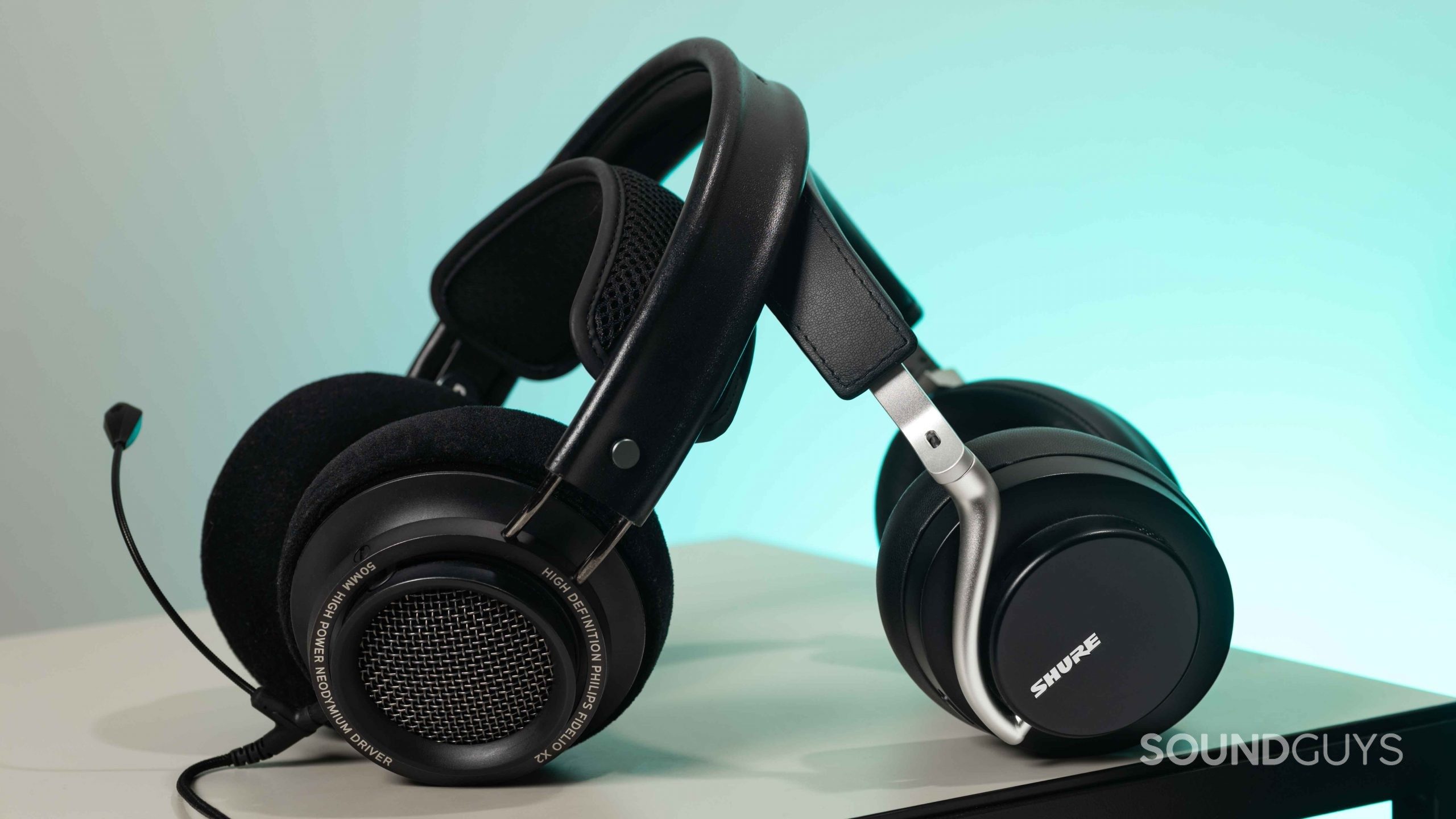
Calling something “the best” at anything is controversial, so we create our best lists with the caveat that your experiences may vary from our own. Sometimes, people have a unique set of needs that can’t be satisfied by going to a list of “best headphones” because the article doesn’t address what the best headphones out there are… for you. Consequently, we encourage all of our readers to consider all the things they want out of their headphones first before rolling the dice on a pick. Our list has a lot of all-time greats, but if you need something a little bit more tailored to your needs, keep reading our other lists and features to arm yourself with the knowledge to make the right purchase.
Think hard about what types of headphones you like (in ears? over ears? on ears?), and also try to figure out what features you need. Maybe you need to go to the store to see how they fit on your head. Do you wear glasses or have ear piercings? Maybe you should look into getting velour pads instead of leather! It’s possible you just want the best-sounding headphones at the expense of all other factors. These are all things covered in our reviews and other best lists.
Are wired headphones better than Bluetooth headphones?
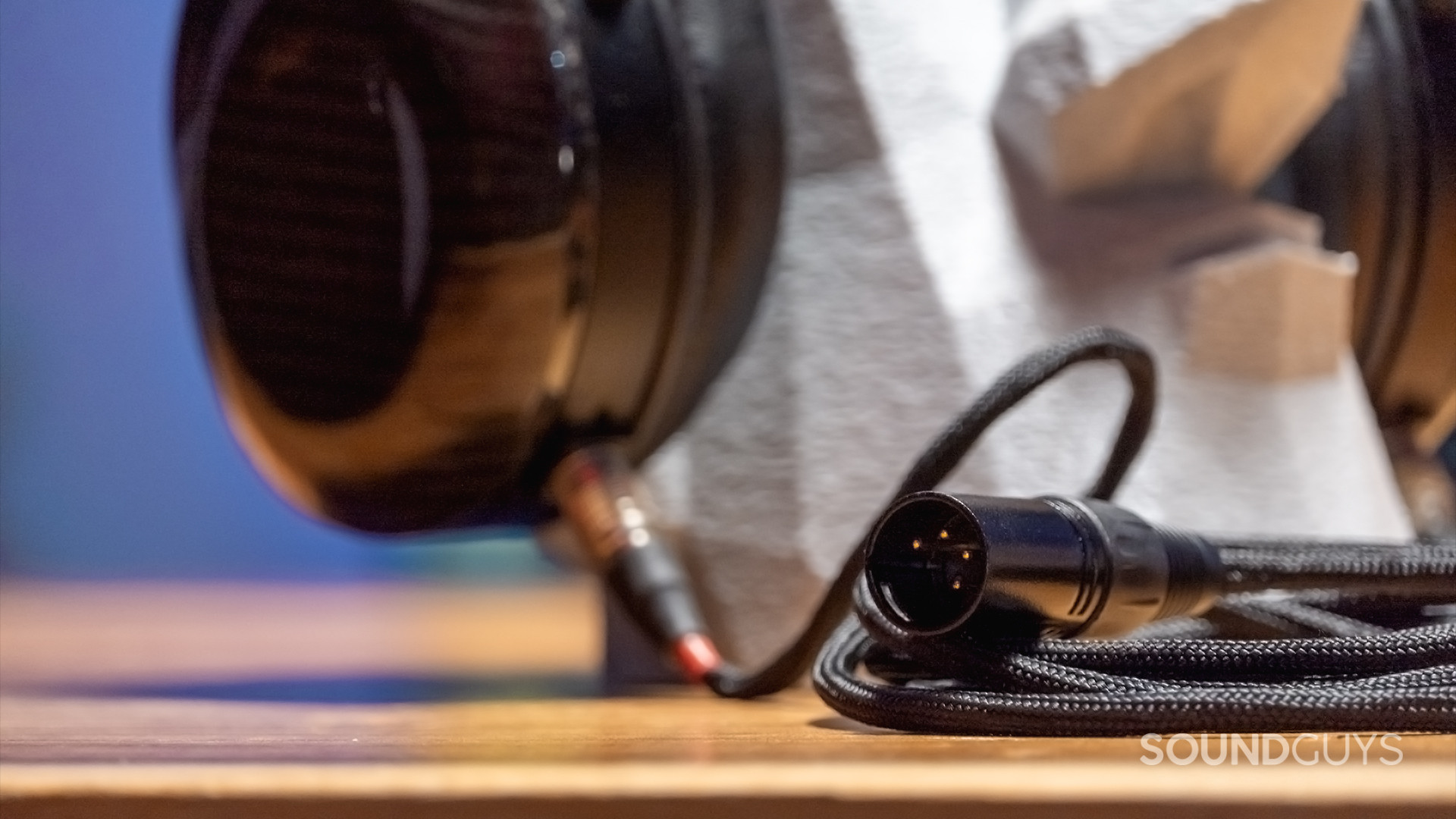
This list has a few wired options if you want great sound, but we also have a few wireless options if you prefer convenience. If you opt for a Bluetooth pair, there are a few things you should know. First and foremost, the rumors you’ve heard are true. Bluetooth just can’t party with wired headphones, at least as it pertains to sound quality. Even some of the best codecs available aren’t as great as they seem at first glance. AAC basically only plays its best if you’re on an iOS device, which means Android users should probably stick to aptX, and LDAC isn’t truly Hi-Res. The good news is that you most likely can’t hear any of the details in the data that are being dropped, but it’s still not a great selling point. Of course, if you do think that you have superhuman hearing feel free to test yourself with our simple hearing test.
There is hope, though: Bluetooth SIG announced LE Audio and the LC3 codec, an efficient alternative to SBC. We’re excited to see the benefits to the hard-of-hearing community play out in the real world and know that LC3 will provide a 50% increase in audio quality relative to SBC. What’s more, headphone stutters will be lessened as packet loss management is improved, so instead of hearing annoying, intermittent drops, the dropout process will be much smoother. Even the best headphones will benefit from the new codec.
We mentioned codecs in the last section, but what exactly is a Bluetooth codec? If Bluetooth is the technology that enables two devices to communicate with each other, then codecs can be thought of as the language that they speak.
When two devices speak the same language, they can communicate faster and send more data to each other, which results in better sound quality. Some of the best codecs have high transfer rates if both devices are compatible, and if they aren’t, then everything just reverts down to the basic codec called SBC.
Unfortunately, codecs can be a bit finicky and, as we mentioned before, don’t always work the way they’re intended to, which is why wired headphones usually sound better. Though it is worth mentioning that Qualcomm’s aptX adaptive seems promising, we’ll have to wait to test it ourselves before we get our hopes up.
How does active noise canceling work?
If you were wondering how active noise cancelation works, don’t worry; you’re not alone. There’s a lot that goes into it, and some companies like Bose and Sony have their own ways of achieving it technologically, but it all comes down to basic physics. Active noise canceling is actually something called destructive interference. If you take one wave with an amplitude of +1 and combine it with another wave that has an amplitude of -1, you’re left with zero.
![Sine Waves[UCONN] How active noise canceling actually works](https://www.soundguys.com/wp-content/uploads/2017/05/Sine-WavesUCONN.jpg)
Active noise canceling headphones take advantage of this by using tiny microphones to hear what sounds are around you and then creating an opposite sound wave to cancel that before it reaches your ears. Of course, this isn’t perfect and works better for long, droning sounds than sudden, screeching ones. So don’t expect ANC headphones to block out that crying baby on your next flight. But when you combine noise canceling technology with good isolation, you can get pretty close to completely blocking the outside world.
This is harder to achieve with earbuds, as they don’t completely cover your ear. So, instead, a solid pair of memory foam ear tips might be worth looking into, as they do a better job of isolating sound than the silicone ones that come with most buds.
How we choose the best headphones
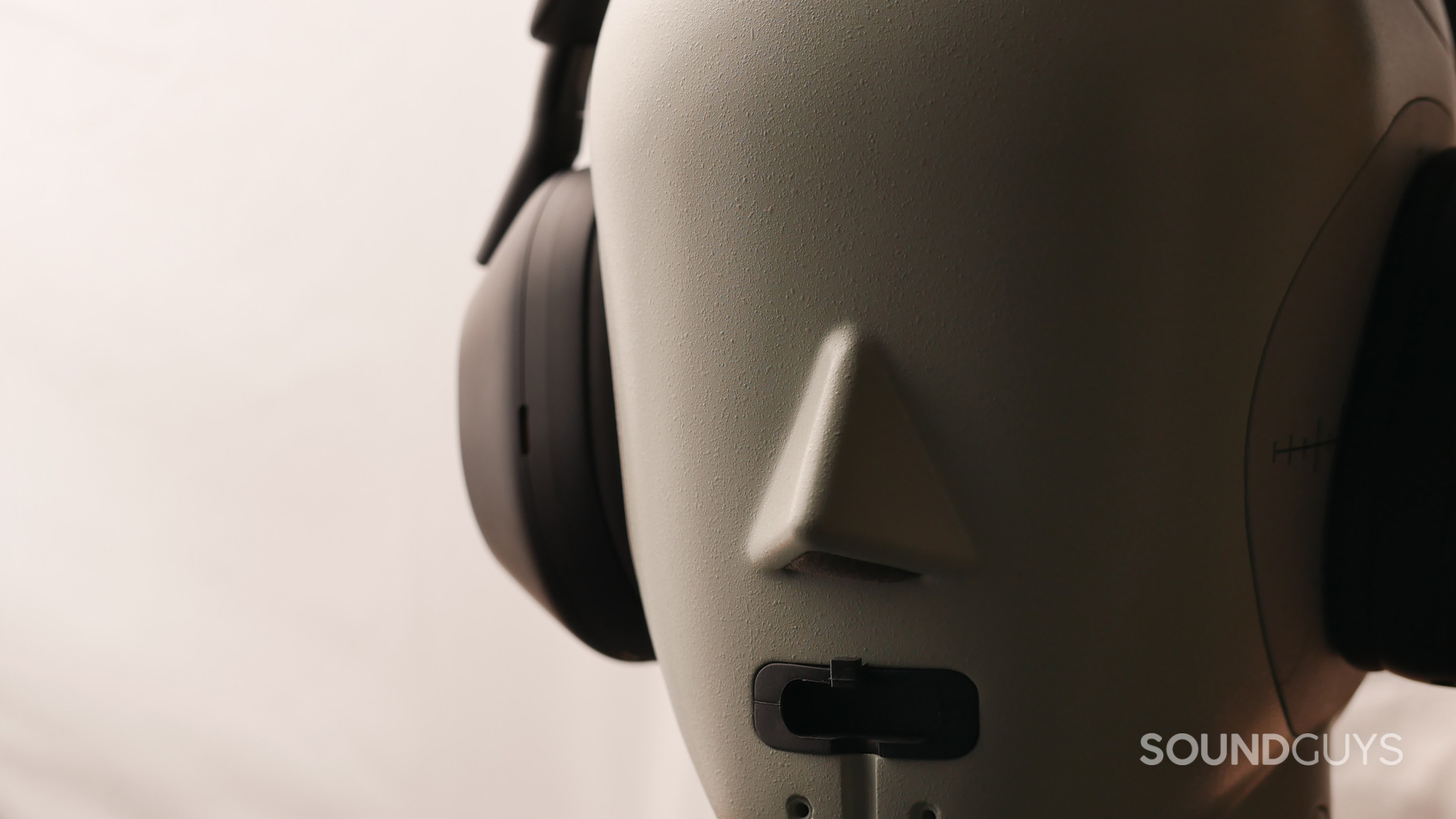
Just like power tools and kitchen utensils, headphones are built for different purposes. Using the right tool for the job is important and ensures that you get the best experience possible. You wouldn’t use a chainsaw to cut butter any more than you’d use a set of AKG K7XX on an airplane.
In that light, we took extra time to take into account how most people actually use headphones. What makes a good pair of gym earbuds? What makes a good pair of wireless earbuds? What’s the good in having a best headphones list that doesn’t help most people buy headphones they like?
While we took the time to highlight some Bluetooth headphones, active noise cancelers, and open-backed cans — be sure to read the descriptions to see if they’re right for you. Many people want a set of headphones that will do everything, but those models are few and far between. It’s more about what people actually want.
While many might be upset that we chose more consumer-geared models than the stunning halo products of audiophile lore, it’s important to us that our readers aren’t dissatisfied with their headphones. To that end, we find that ultra-expensive headphones are generally a poor fit for most, often leaving your average consumer frustrated and feeling like they wasted a lot of money. This is due in part to the law of diminishing returns because some cheap headphones are already pretty darn good; it can be a hard to really bitter pill to swallow if you don’t hear hundreds of dollars difference. Those with a more developed idea of what kind of headphones they want should also check out our other best lists. Not every best headphone model listed here will meet all of your needs.
That said, all of our picks were used by at least one team member, and all of these picks sound fantastic. Because our business model relies on you enjoying your headphones without returning them, this list represents what we earnestly feel is the most deserving of your money. We knew that we wanted to create a list of financially attainable headphones that meet realistic use cases rather than a drool-inducing, unrealistic list for your average consumer.
Why should you trust SoundGuys?
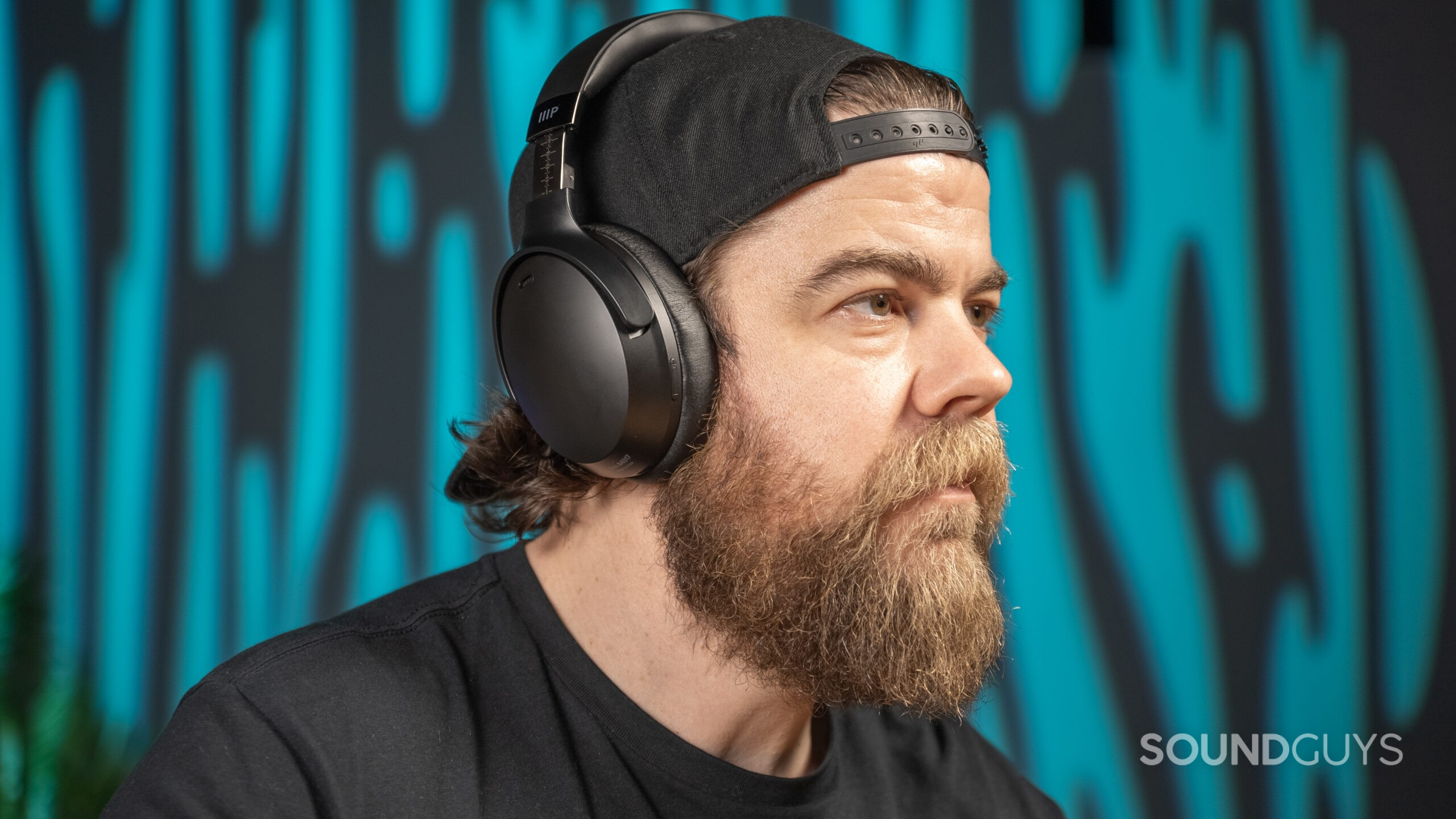
Our team of audio experts brings decades of combined experience in sound engineering, product testing, and industry analysis. We’ve watched (and listened to) the evolution of headphone technology, from the early days of portable audio to today’s AI-enhanced, multi-functional devices. This deep expertise, combined with our rigorous testing methodology, allows us to cut through marketing hype and provide you with trustworthy recommendations.
In short, you should trust us because we show our work, strive to provide unimpeachable information, and base our revenue model on the happiness of our readers with our recommendations. We are also the first outlet to have independently validated preference curves for over-ear headphones and in-ears using our test fixture.
When it comes to audio, the SoundGuys team has years of experience reviewing products between them (and even more listening to them). So, if a product makes the best headphones list, it’s because we were genuinely impressed by our hands-on experience with them.
Frequently asked questions about the best headphones
In 2024, the best headphones for most people are the Sony WH-1000XM5, offering exceptional active noise canceling (ANC), sound quality, and features.
While “best” is subjective, brands like Sony, Bose, and Sennheiser consistently rank highly for their quality, innovation, and range of options catering to various needs and preferences.
Bose headphones are priced higher due to their cutting-edge noise cancelation technology, premium materials, and brand reputation for audio products. But thankfully, you can often find their products on sale. Check out our deals hub if you’re looking for a bargain.
For those prioritizing ANC, comfort, and bass, Bose headphones, like the QuietComfort Ultra, offer advanced audio experiences, making them a worthwhile investment for their target audience. However, the standard QuietComfort headphones aren’t worth the price for the features in our estimation.
If you value the nuances in sound quality, advanced features, and build quality, high-end headphones from brands like Sony, Bose, and Sennheiser offer superior audio experience. Still, if all you need is something simple to block out noise while you listen to music on your commute, there are plenty of cheaper options that are perfectly capable. It all depends on your needs an preferences.
Headphones can get pretty expensive. For instance, the Audeze LCD-5 we reviewed cost a whopping $4,500. But that’s not even the most expensive. Currently, the Focal Utopia by Tournaire is the world’s most expensive headphone, listed at a price of $120,000.
Yes, expensive headphones generally offer features like ANC, better comfort, and build quality. The difference is especially noticeable in noise cancelation capabilities and user experience features.
Good quality headsets can vary in price. For example, high-end models like the Sony WH-1000XM5 are around $399, but there are excellent quality options at lower price points, such as the 1MORE SonoFlow under $100.
The Sony WH-1000XM5 is the best overall choice for listening to music due to its superior noise canceling, excellent sound quality, and advanced features like custom equalizer and 360 Reality Audio. If budget is a concern, the Anker Soundcore Space Q45 offers a good balance of price and performance with decent noise canceling and sound quality.
Assuming by “realistic” you mean something akin to a studio-style frequency response and aiming to get an accurate representation of what you’re listening to with noise cancelation, you might’ve noticed that a lot of headphones with ANC don’t have that. Most ANC headphones have consumer-oriented tunings.
Depending on your device, you could get a pretty accurate frequency response with lots of noise cancelation if you simply turned down the bass in the equalizer on the Sennheiser MOMENTUM 4 Wireless or even Apple AirPods Max. Both headphones have great ANC, with the AirPods Max having more ANC but fewer options in terms of connectivity, such as the AAC codec and SBC codecs only, rather than aptX on the MOMENTUM 4 Wireless, for instance.
All of our best headphone picks have good sound quality, but “good sound” can vary from person to person, even if the fundamentals are well agreed upon. If we were picking one that balances price, connectivity, and frequency response, the Sennheiser MOMENTUM 4 Wireless headphones stand out for excellent sound quality, combining a close-to-ideal frequency response with customizable EQ settings for a premium listening experience.
If you’re a bass-head, look no further than the Bose QuietComfort Ultra headphones. Also, you should poke around our picks for the best bassy headphones for more options.
If you’re looking for Beats headphones and nothing else, you can check out our picks.
I wish I could give you a definitive answer to one perfect pair of wireless headphones. Still, truthfully, the answer to this question depends on your personal preferences.
The Sony WH-1000XM5 headphones are a top choice. They offer exceptional noise cancelation, sound quality, convenience features like Bluetooth multipoint, and a suite of smart controls, making them highly versatile for various needs.
There are a lot of good headphones out there, and we do our best to outline all the objective facts and describe our subjective experiences with each product so you can make an informed decision based on your personal priorities.
